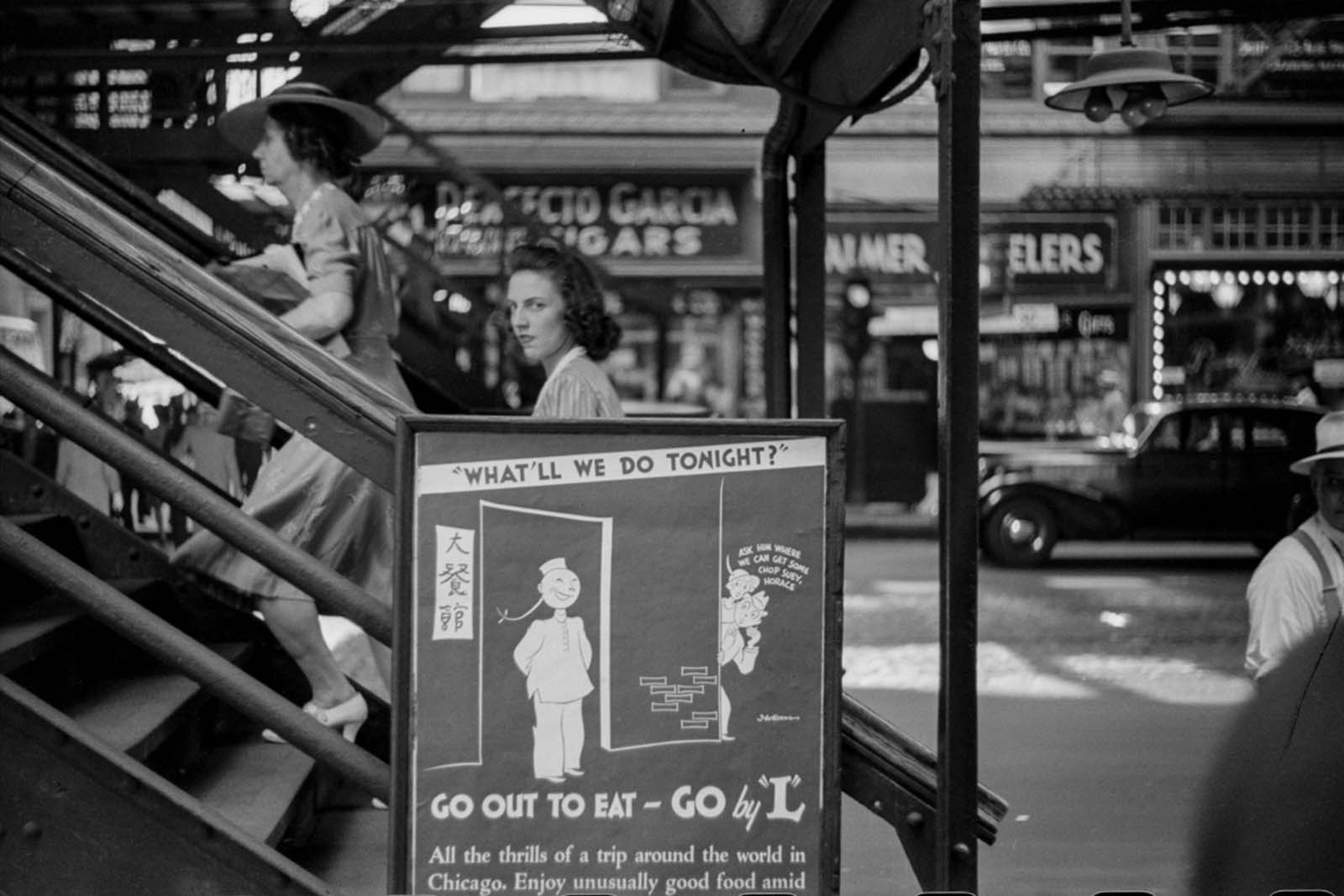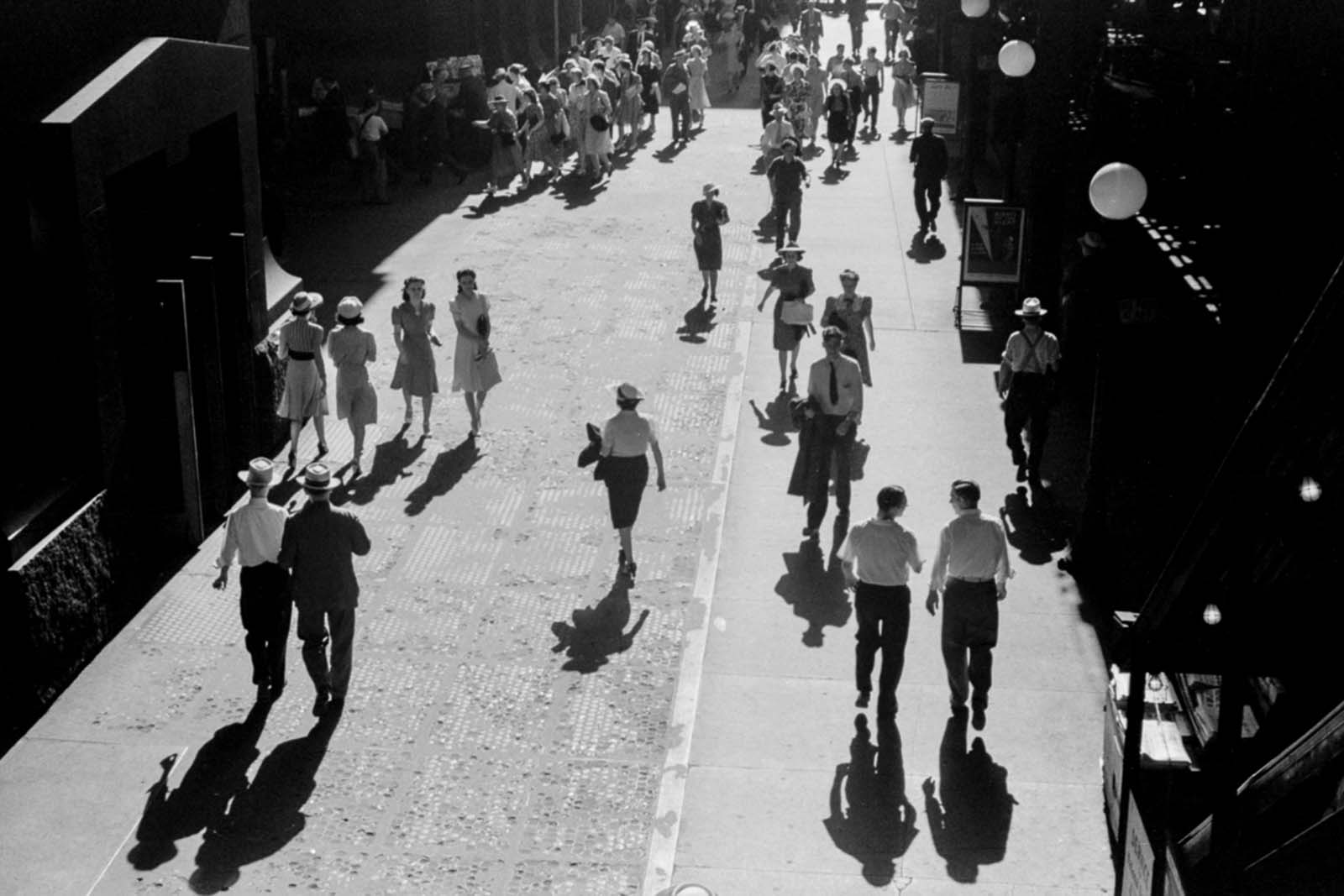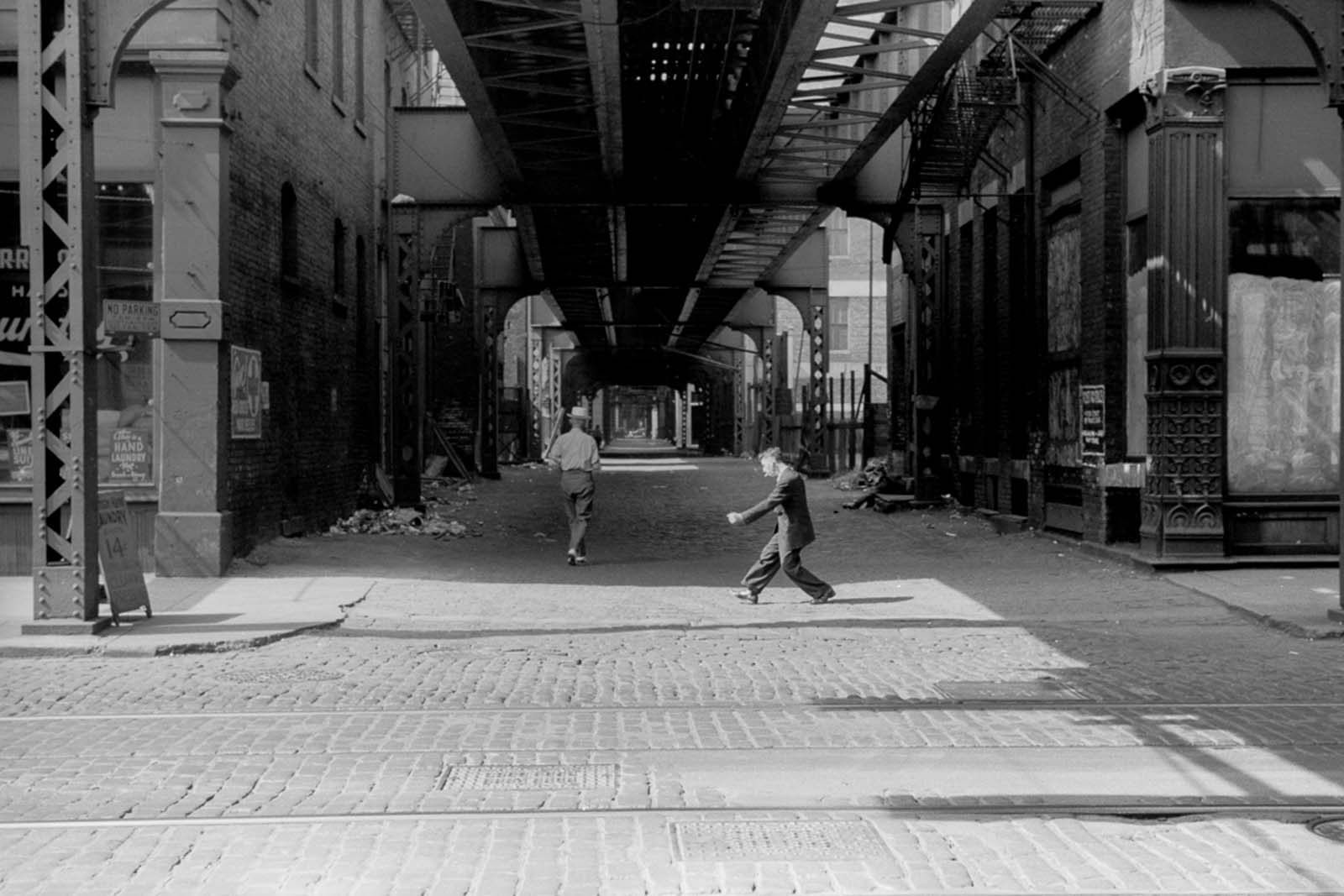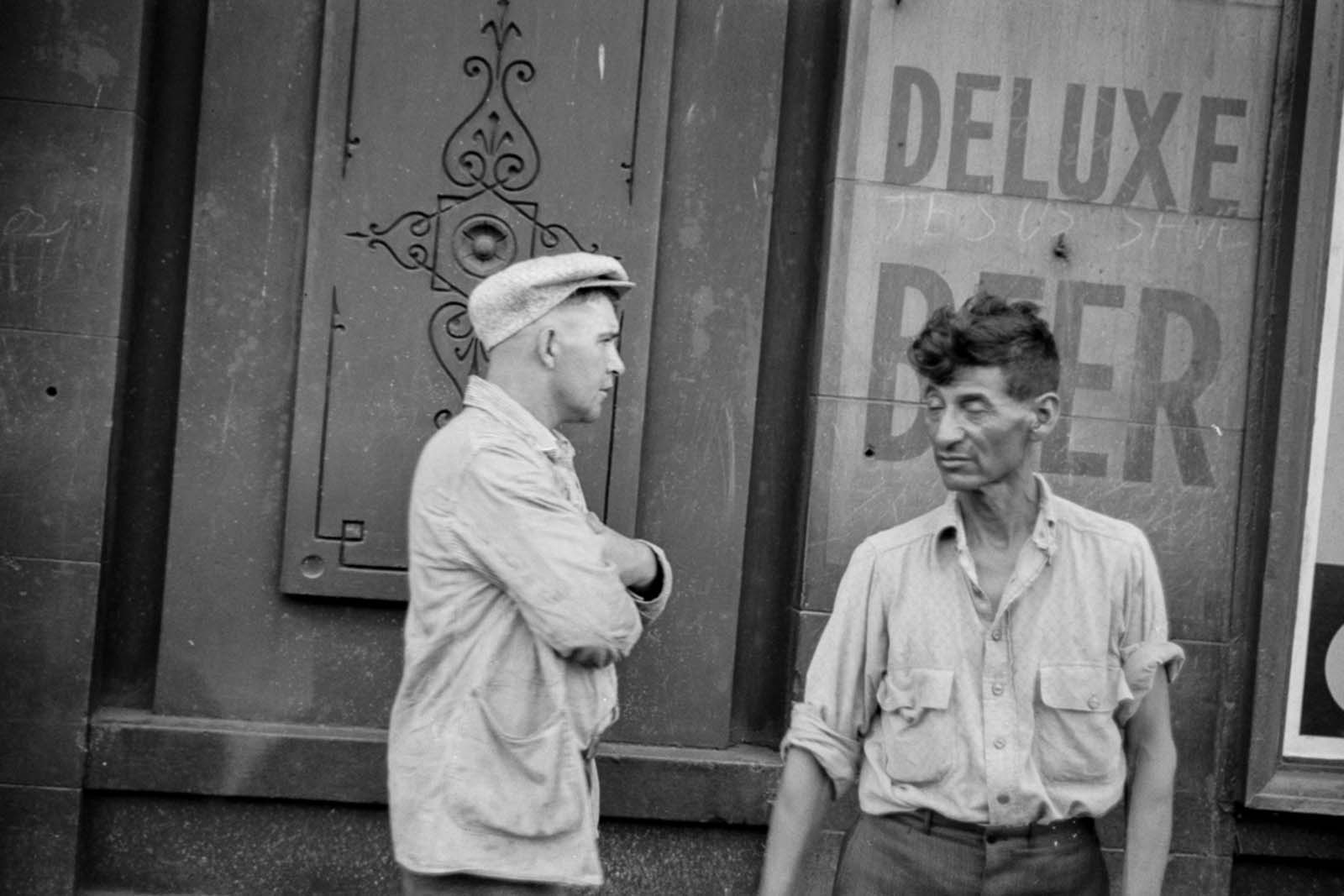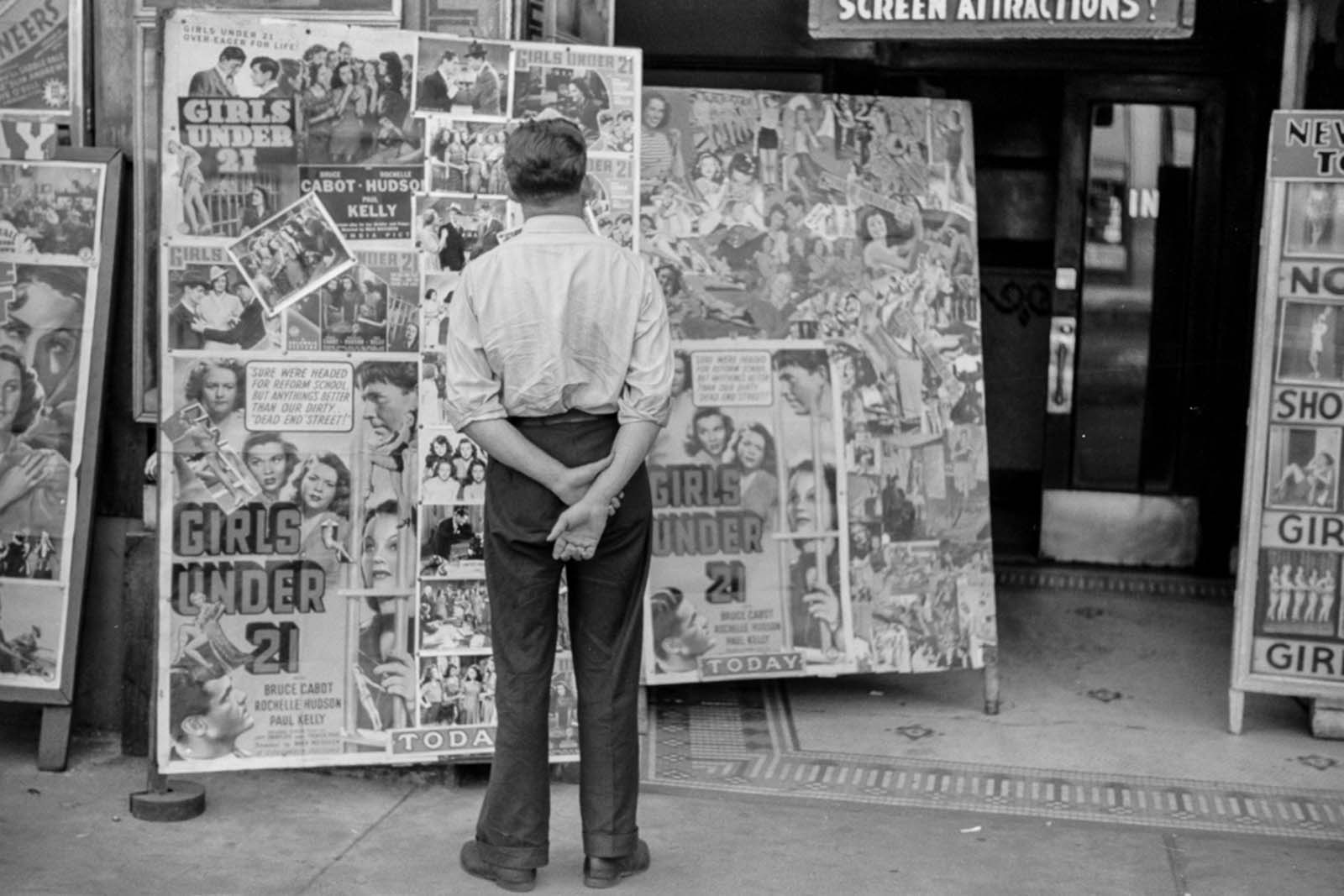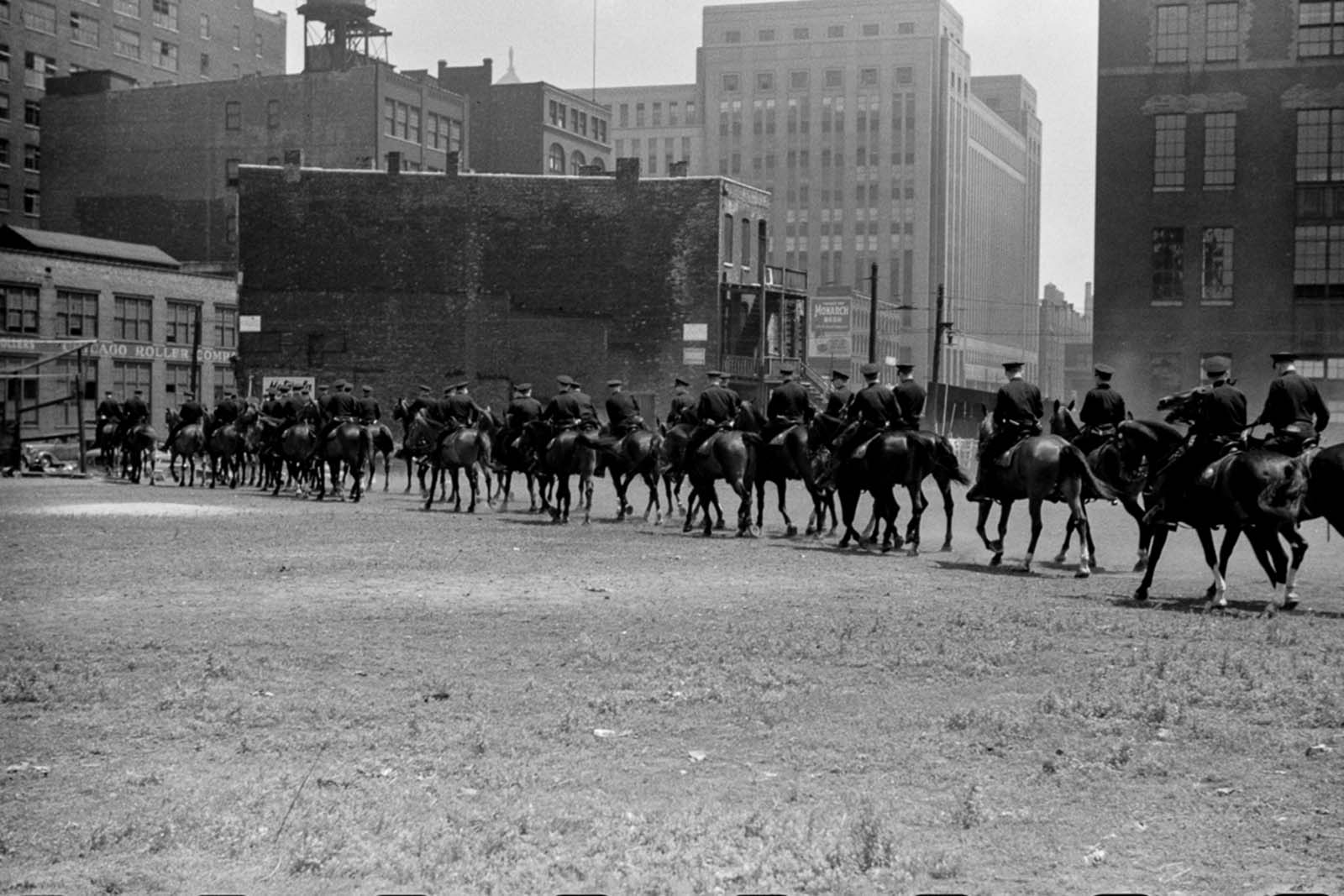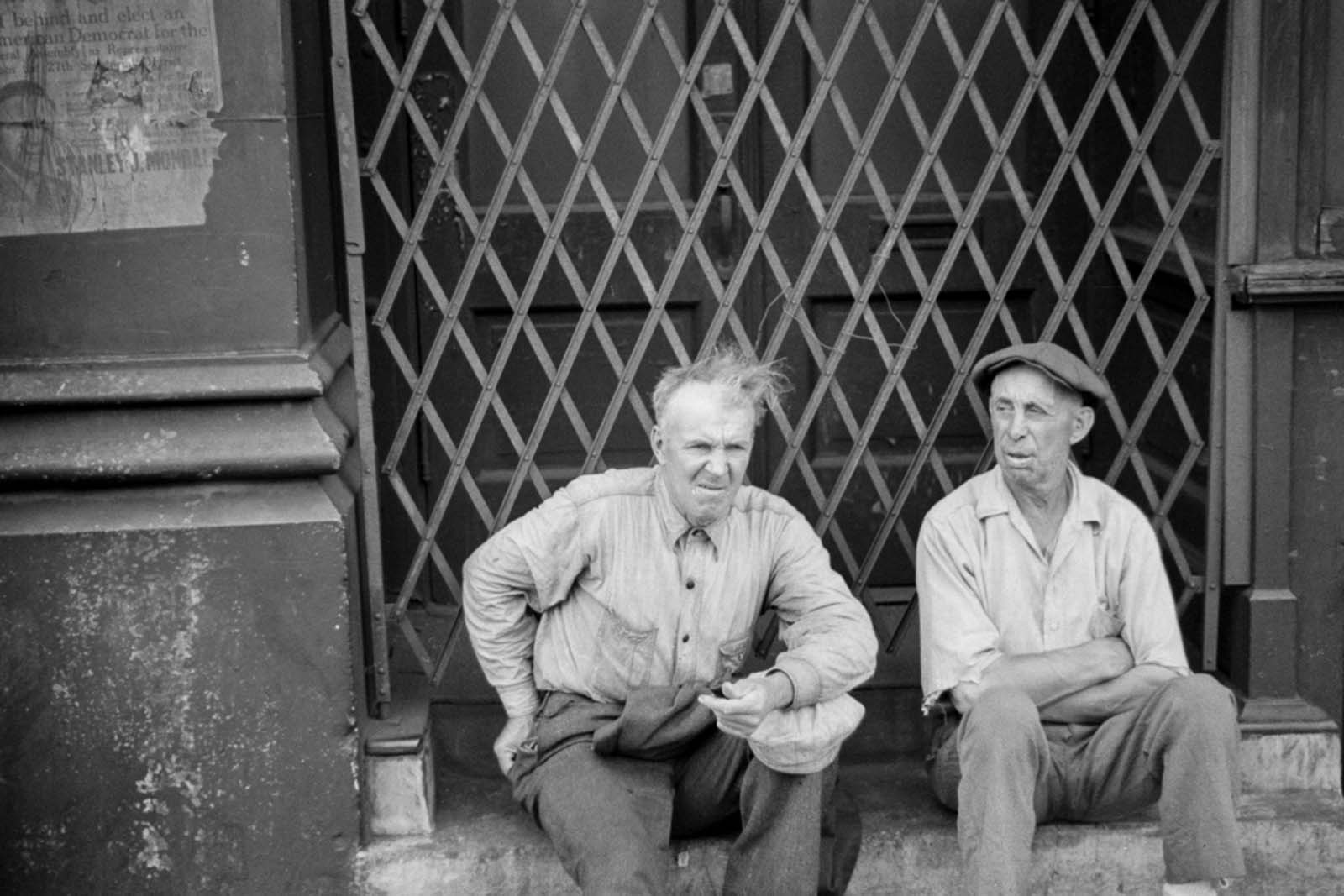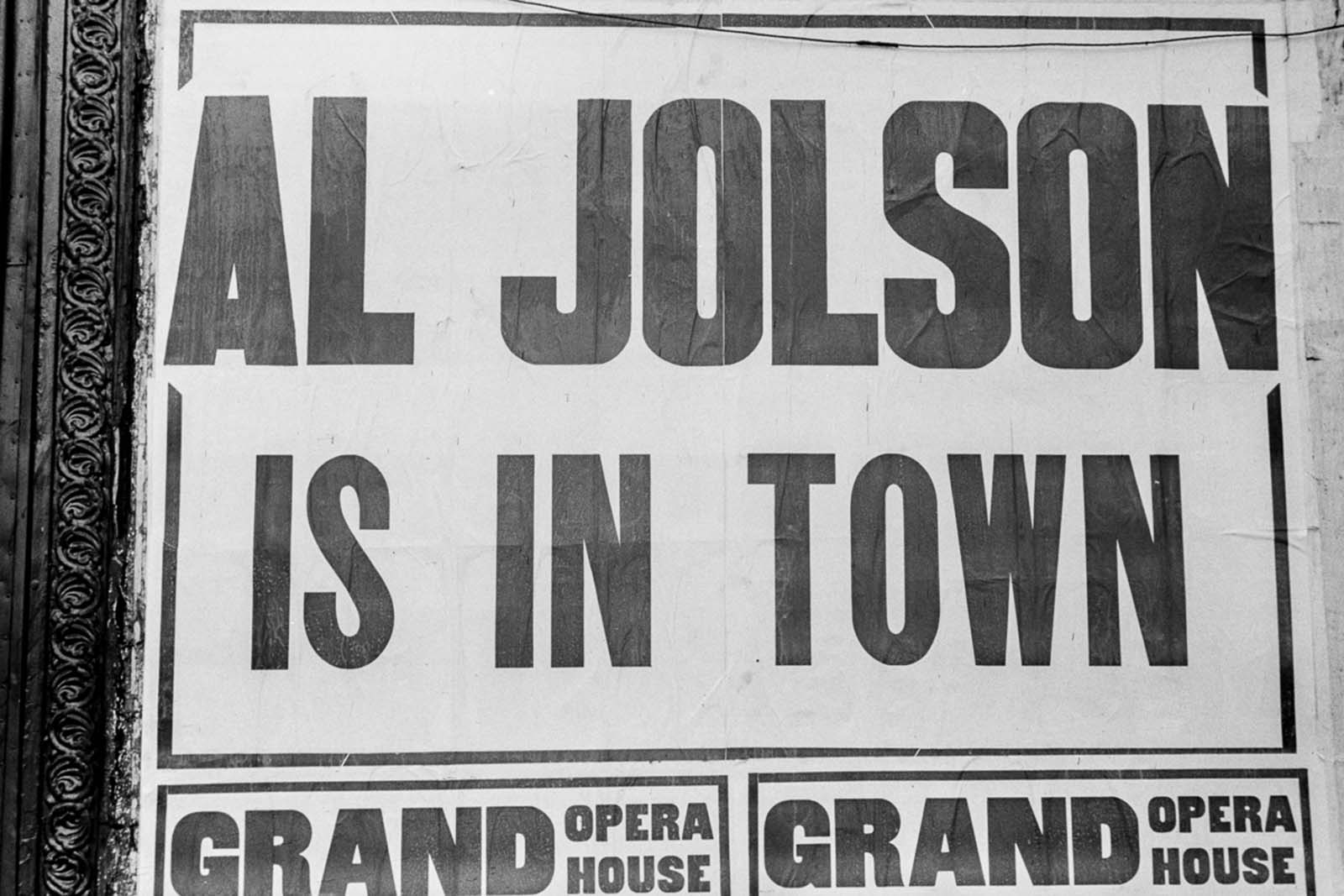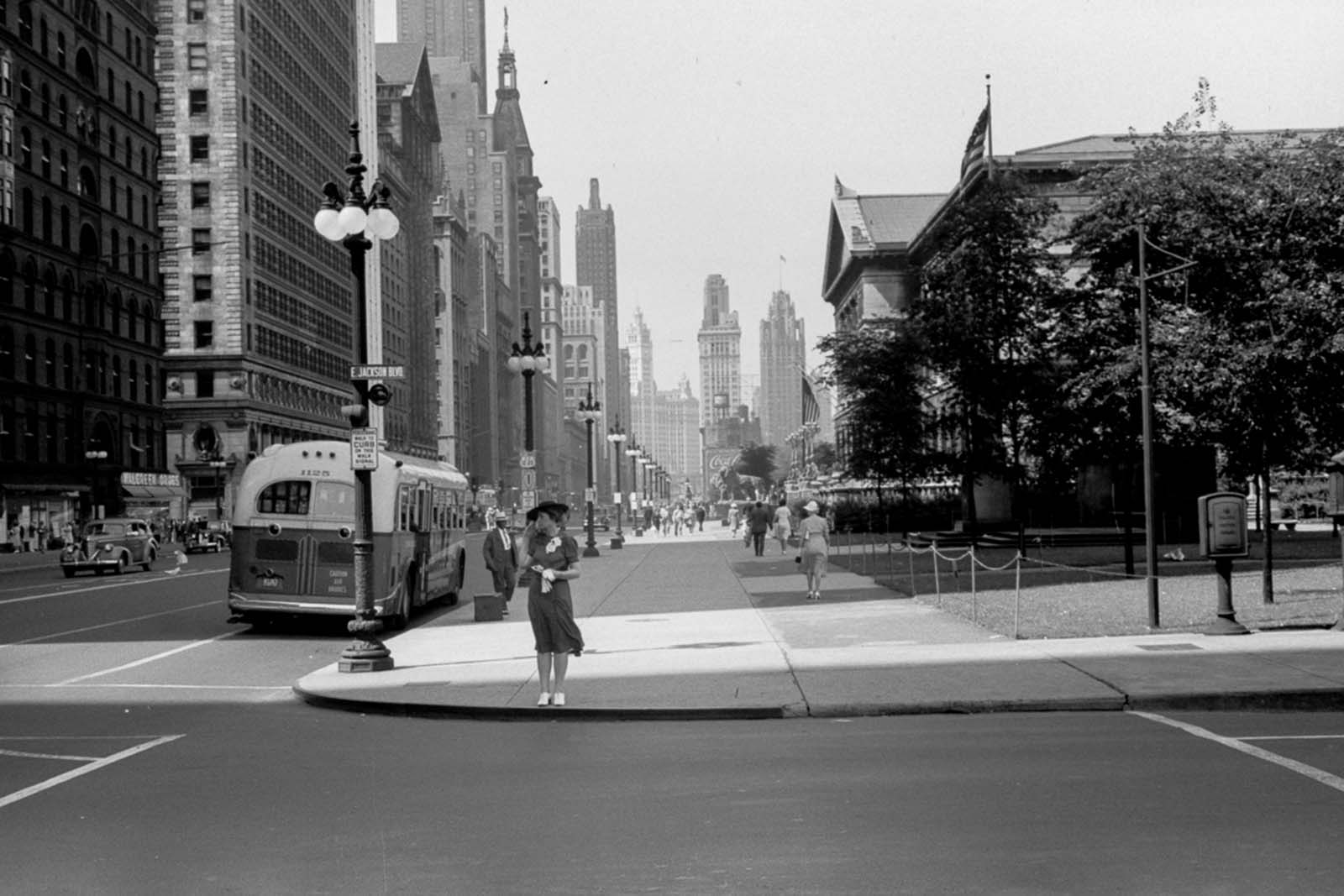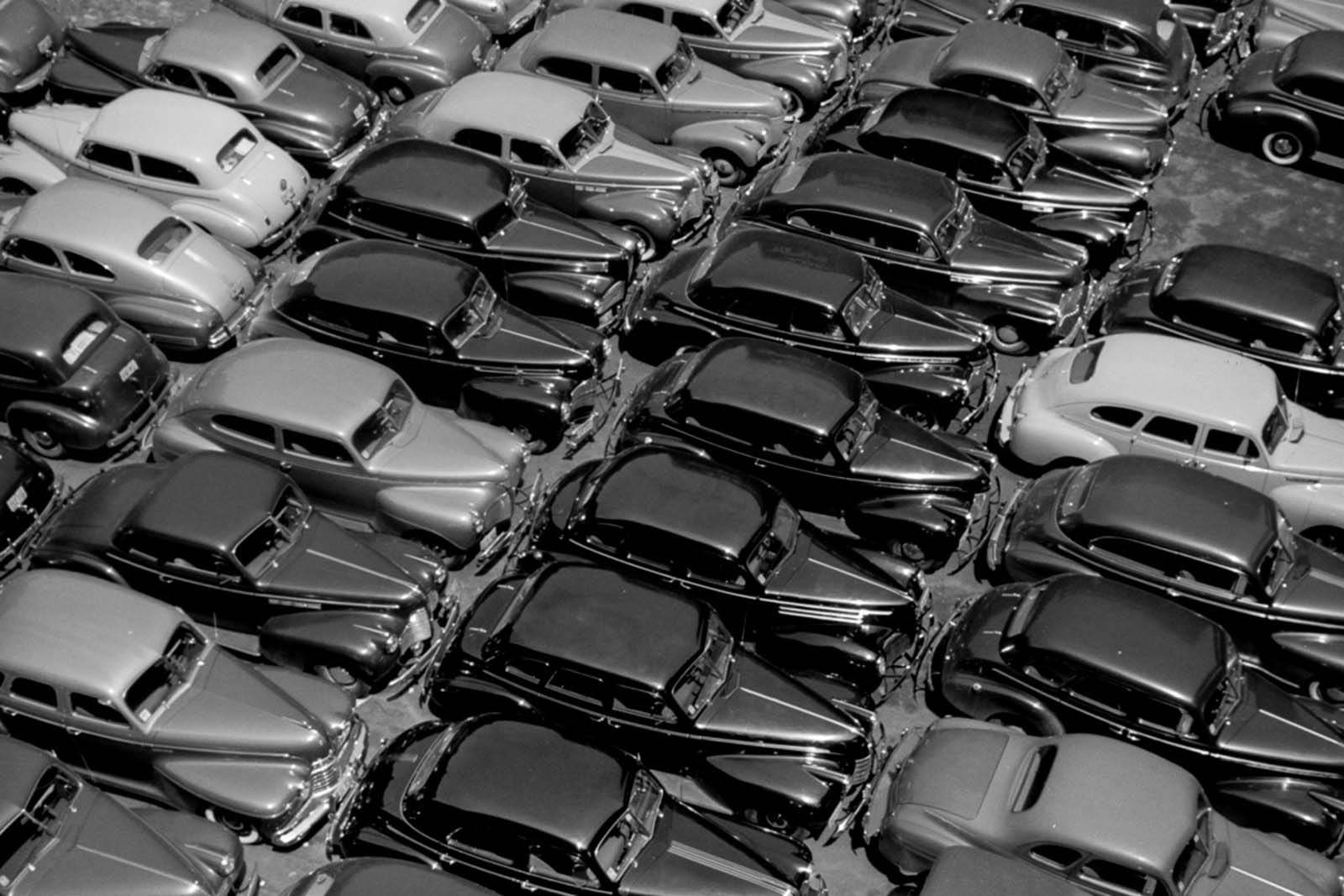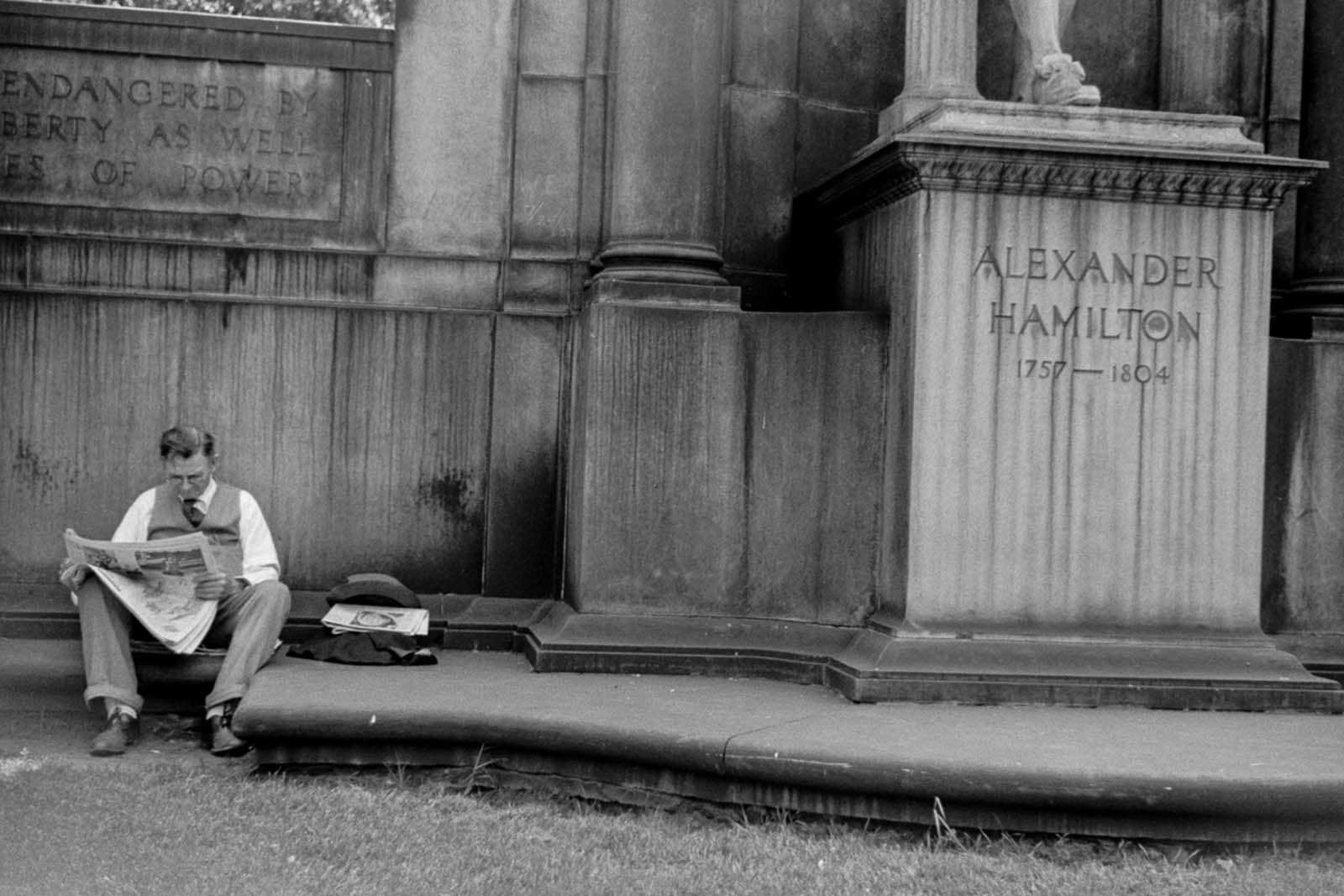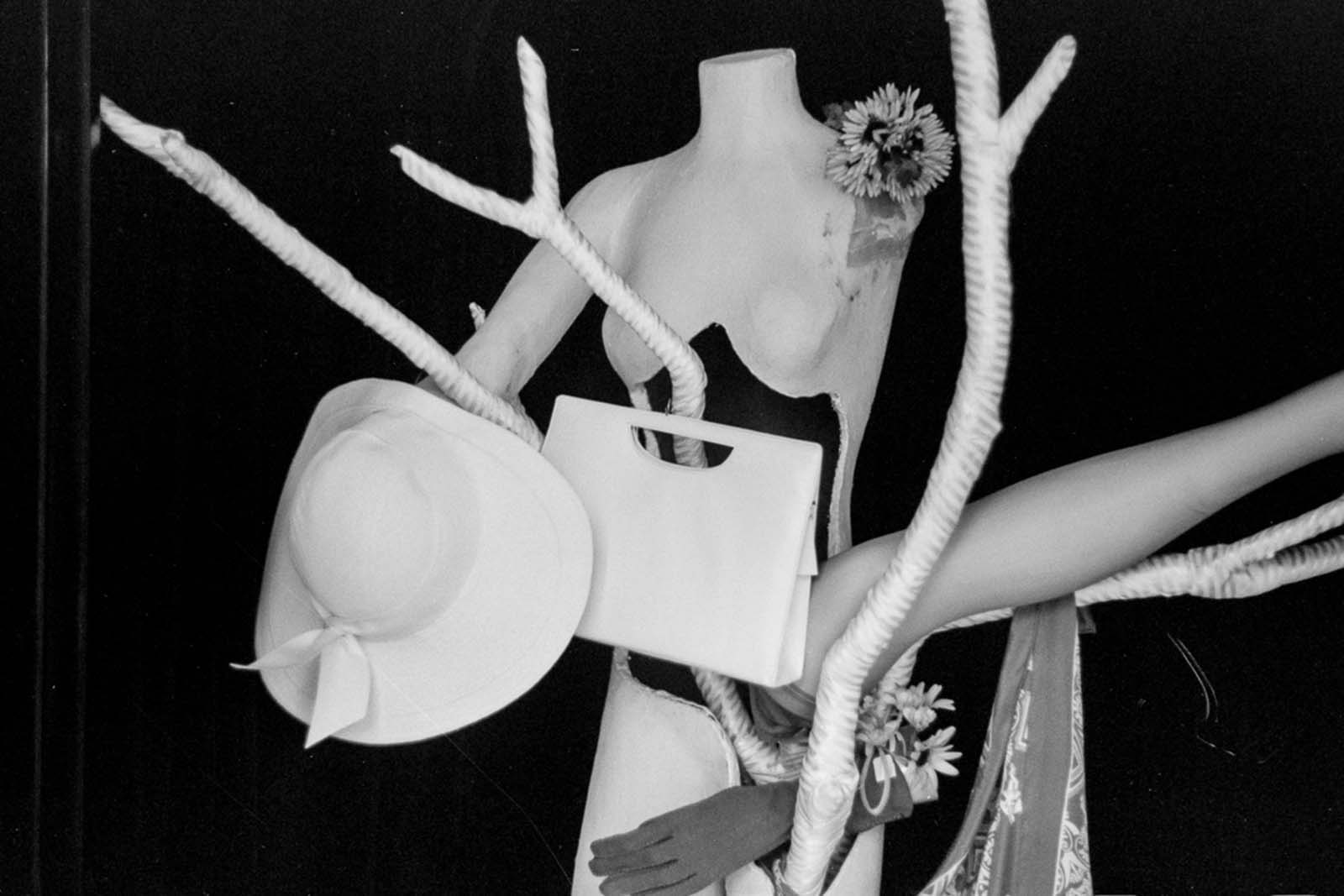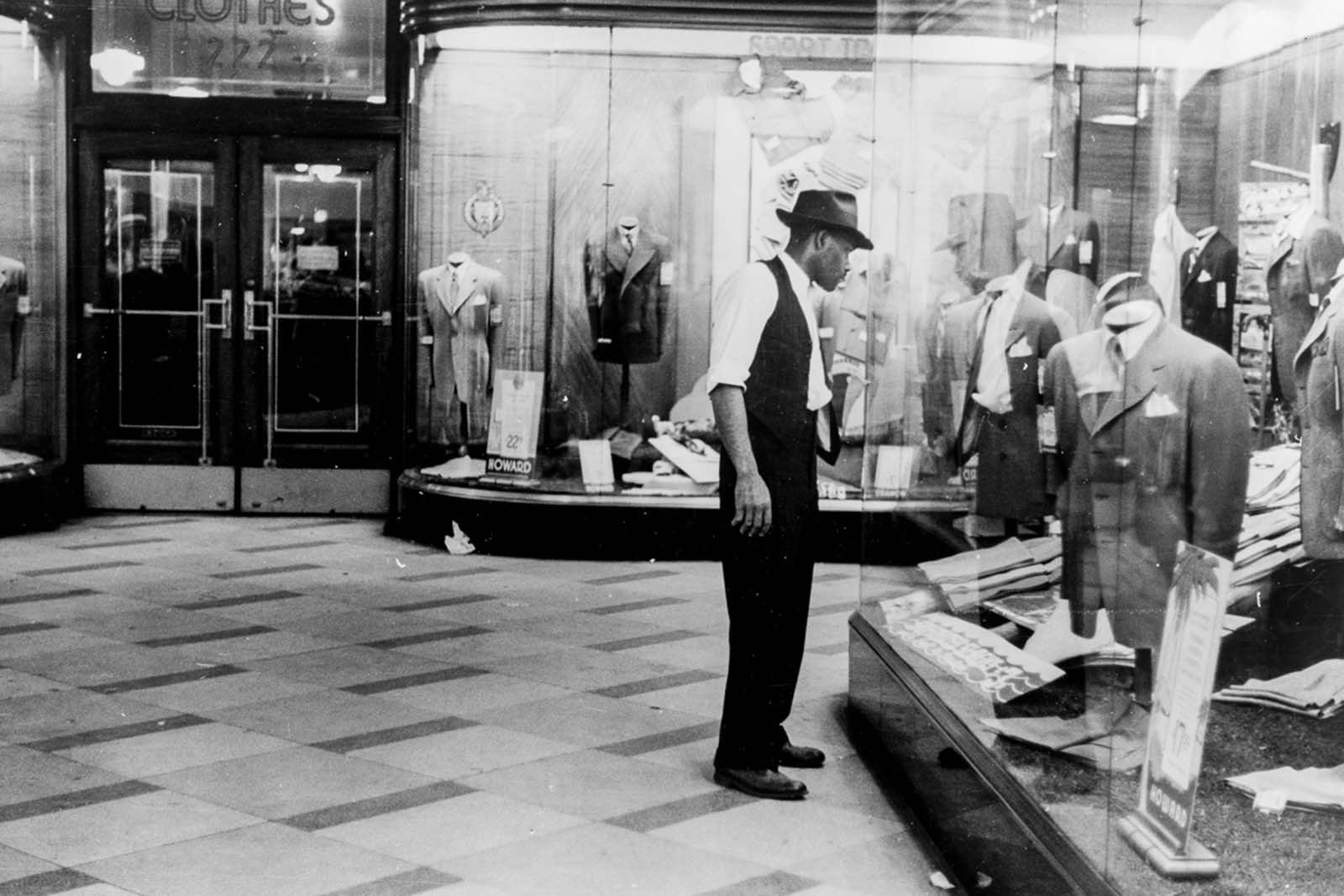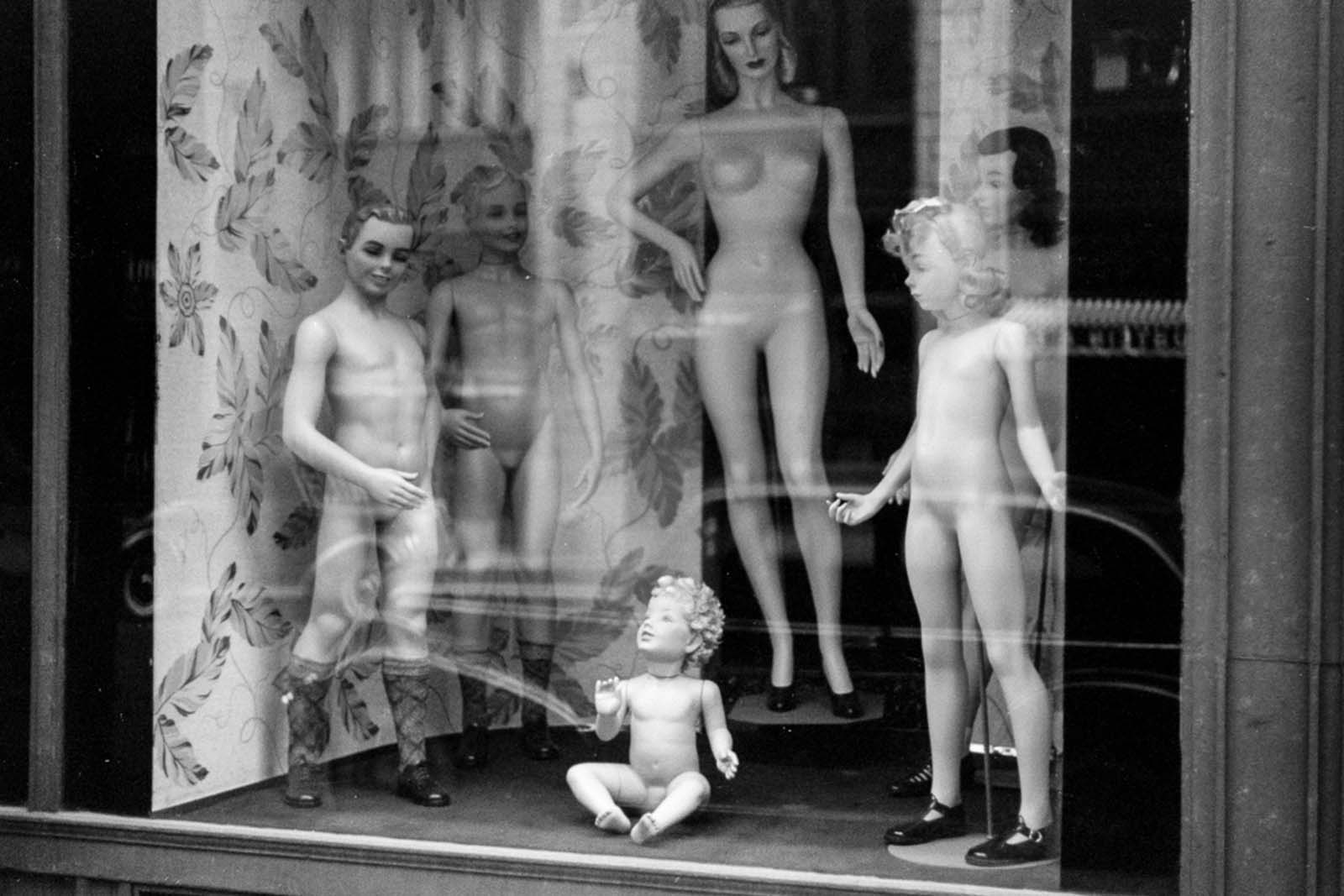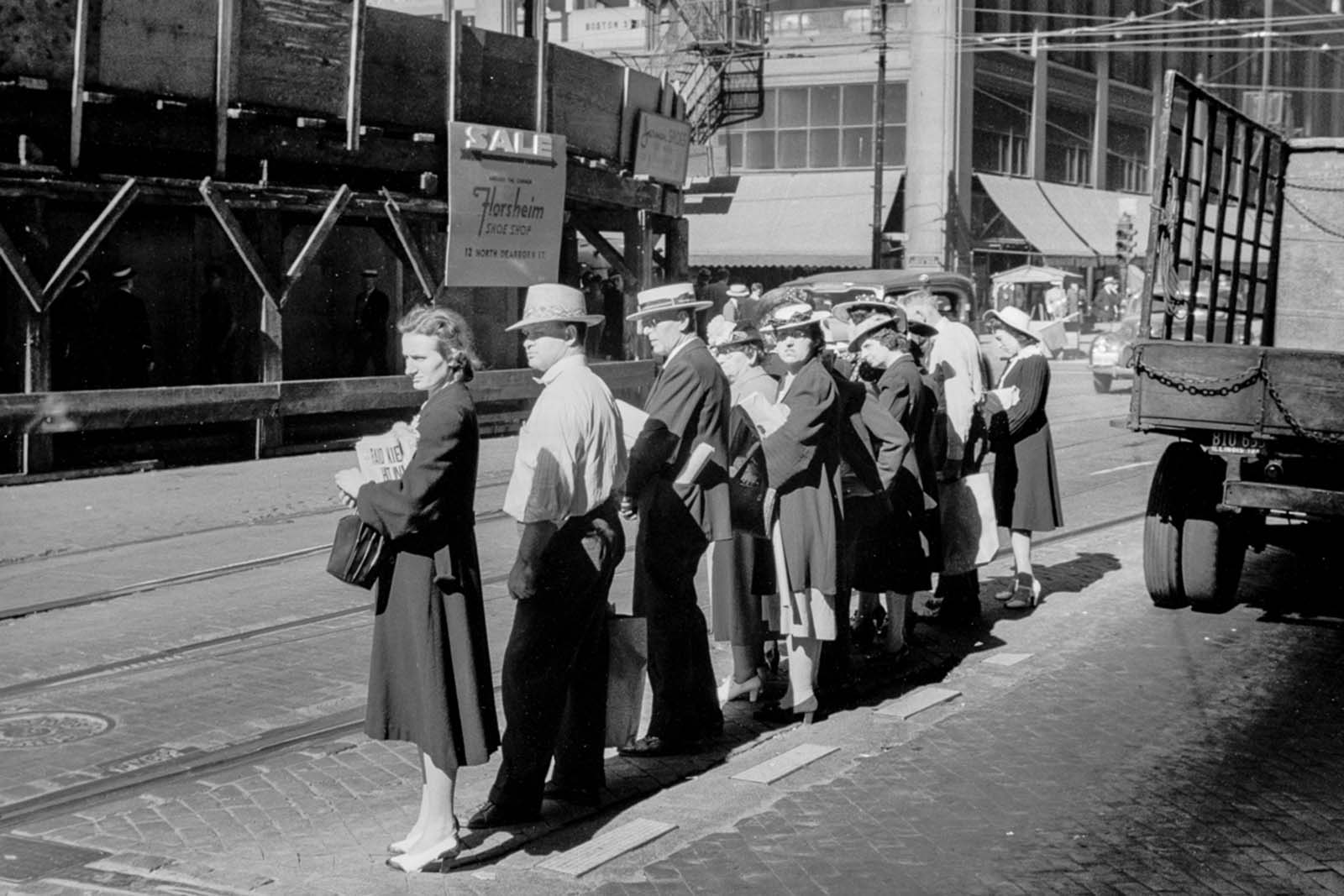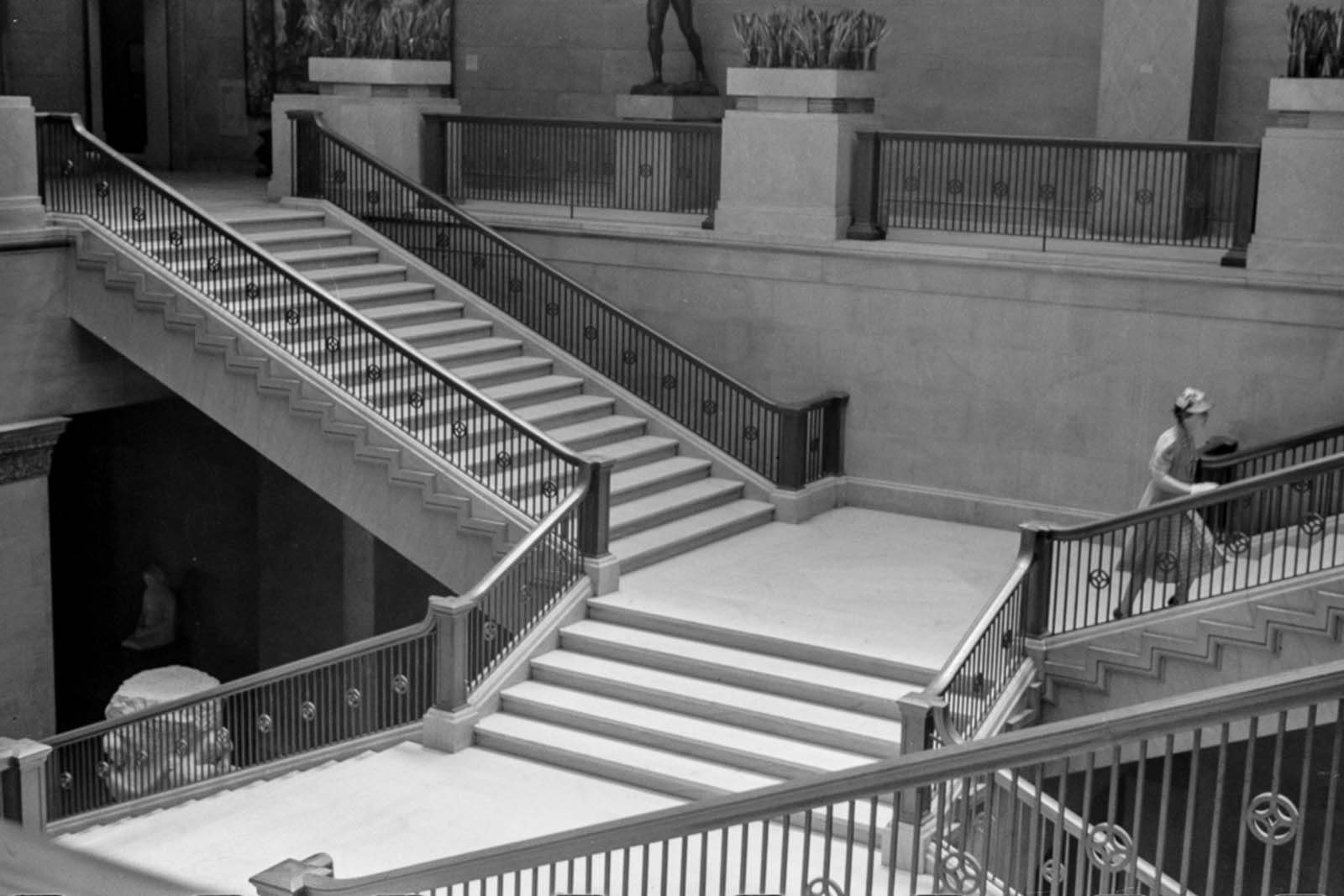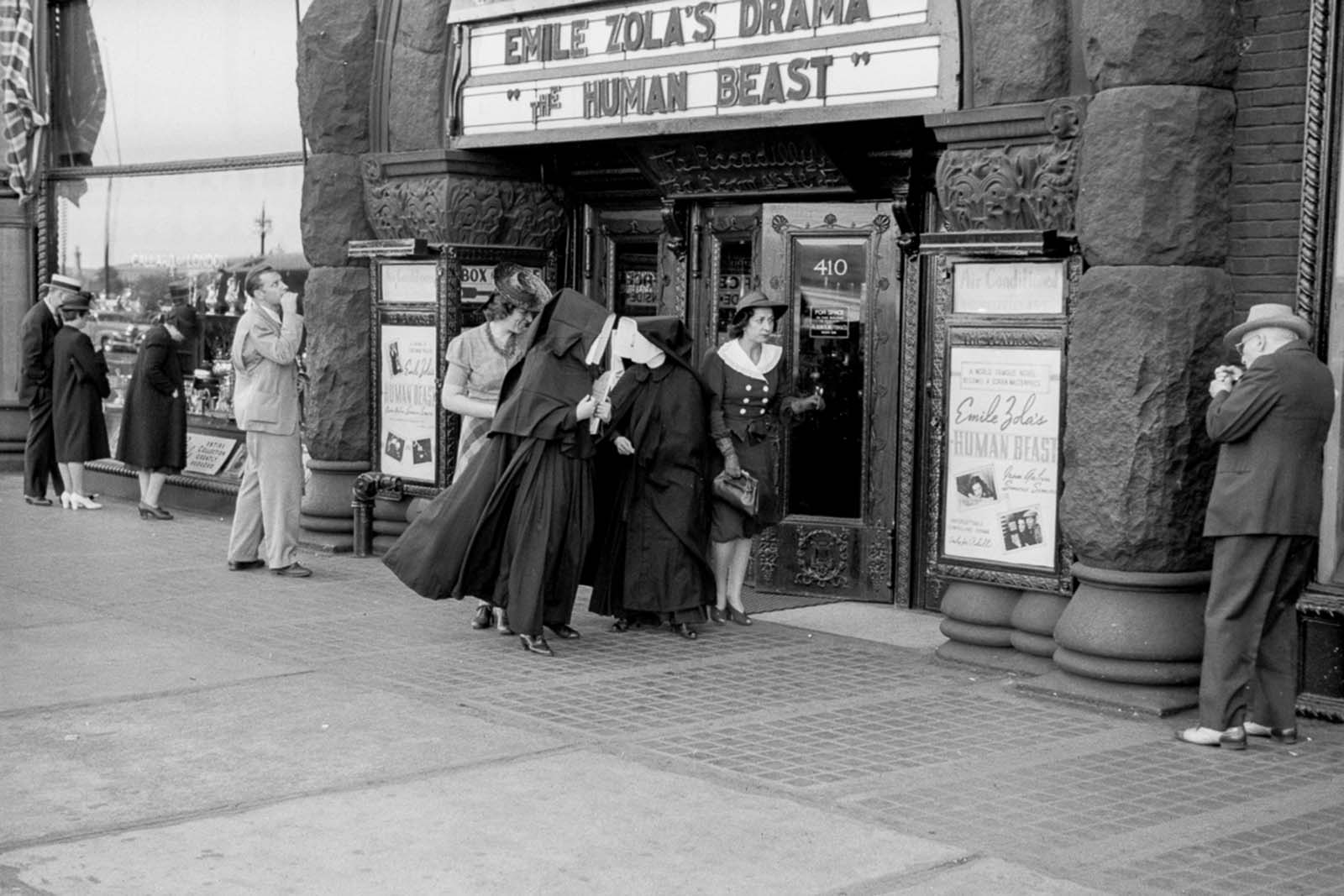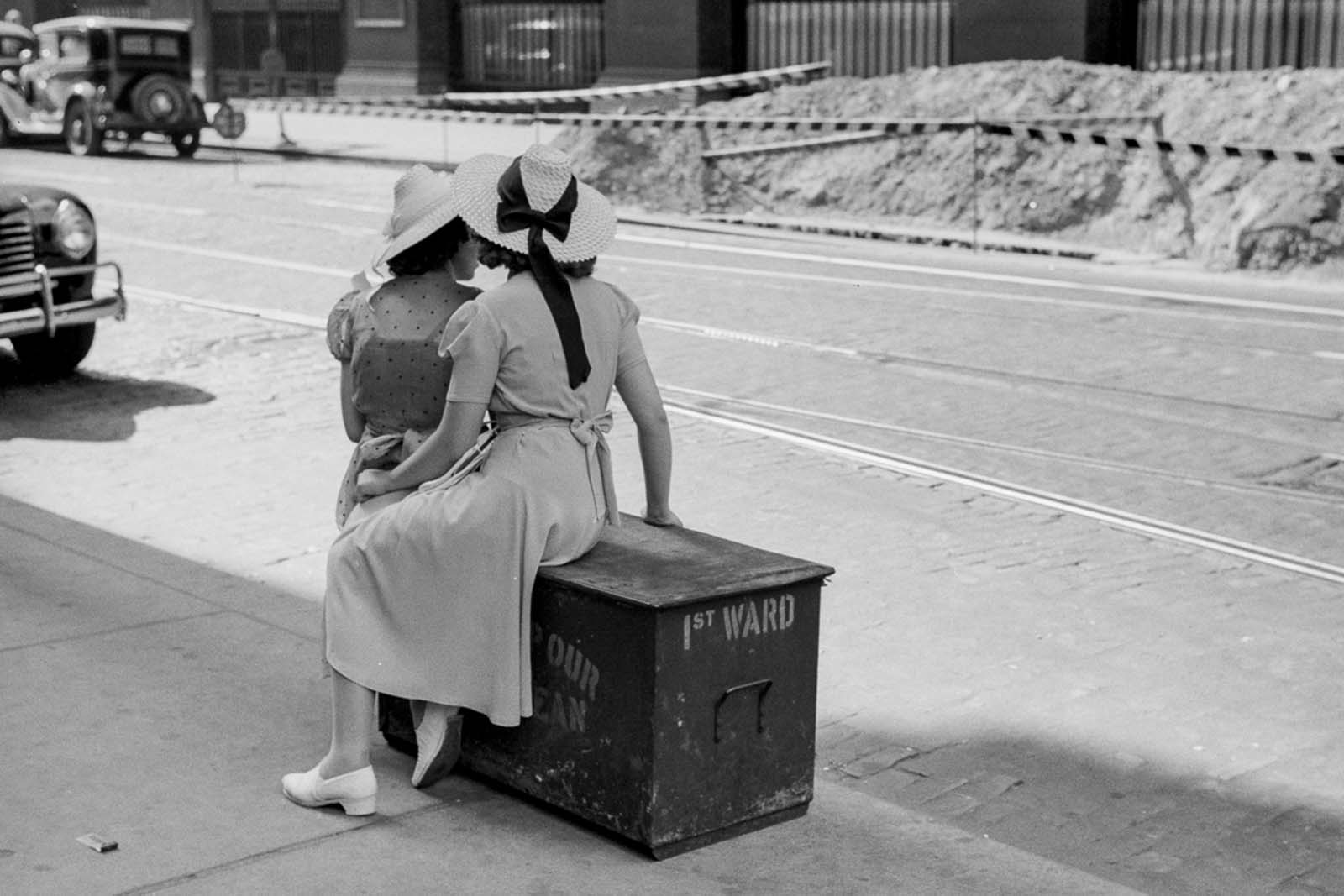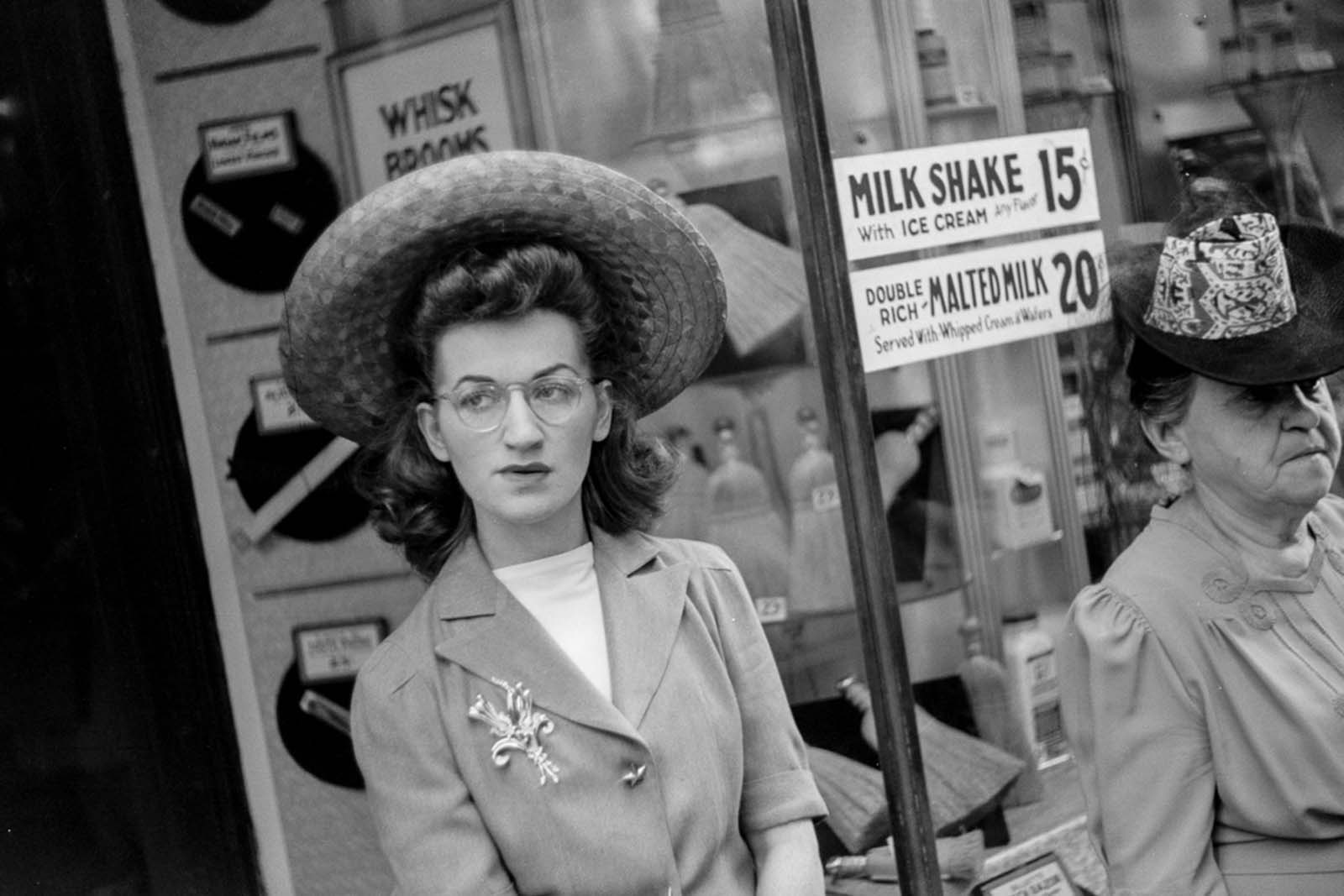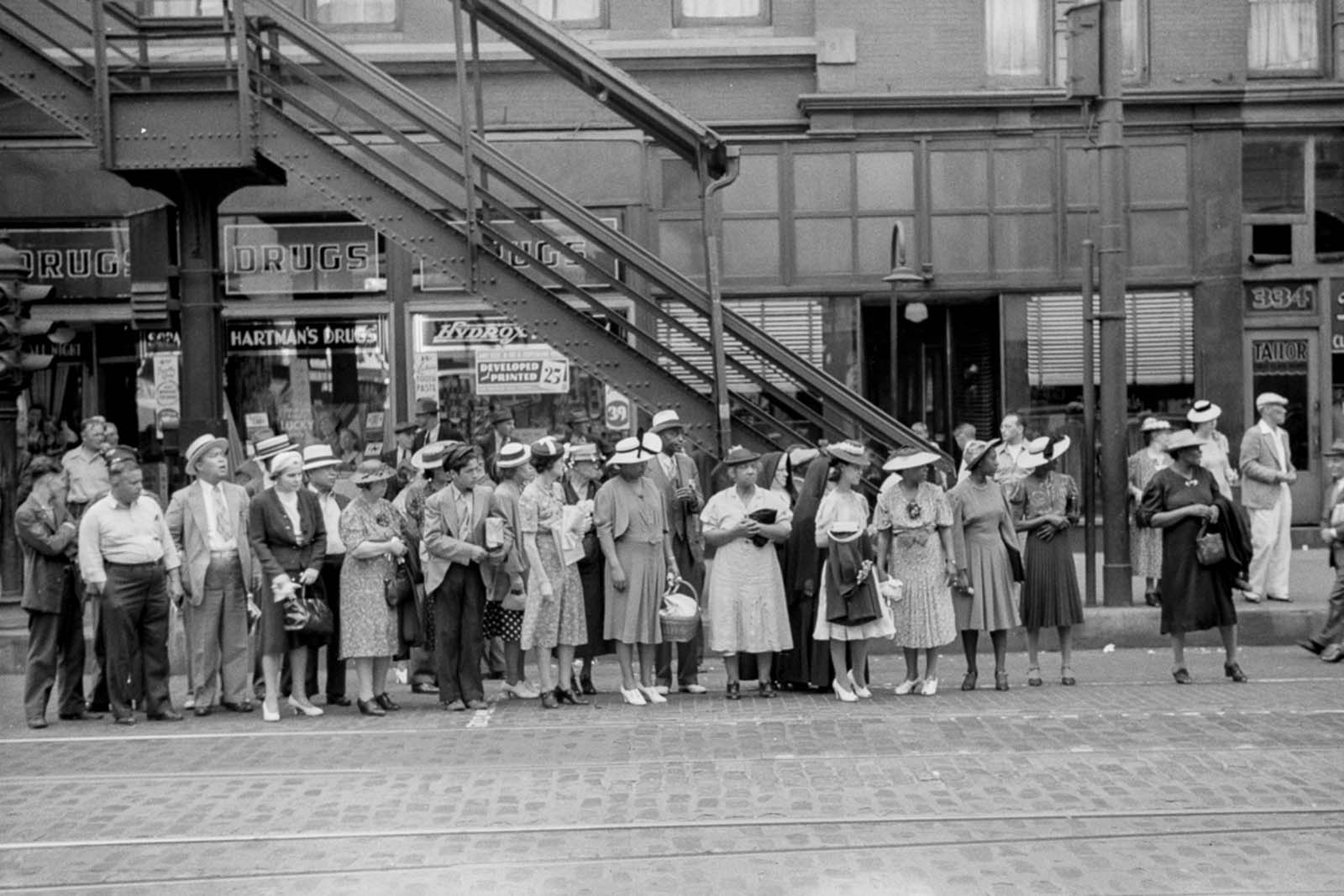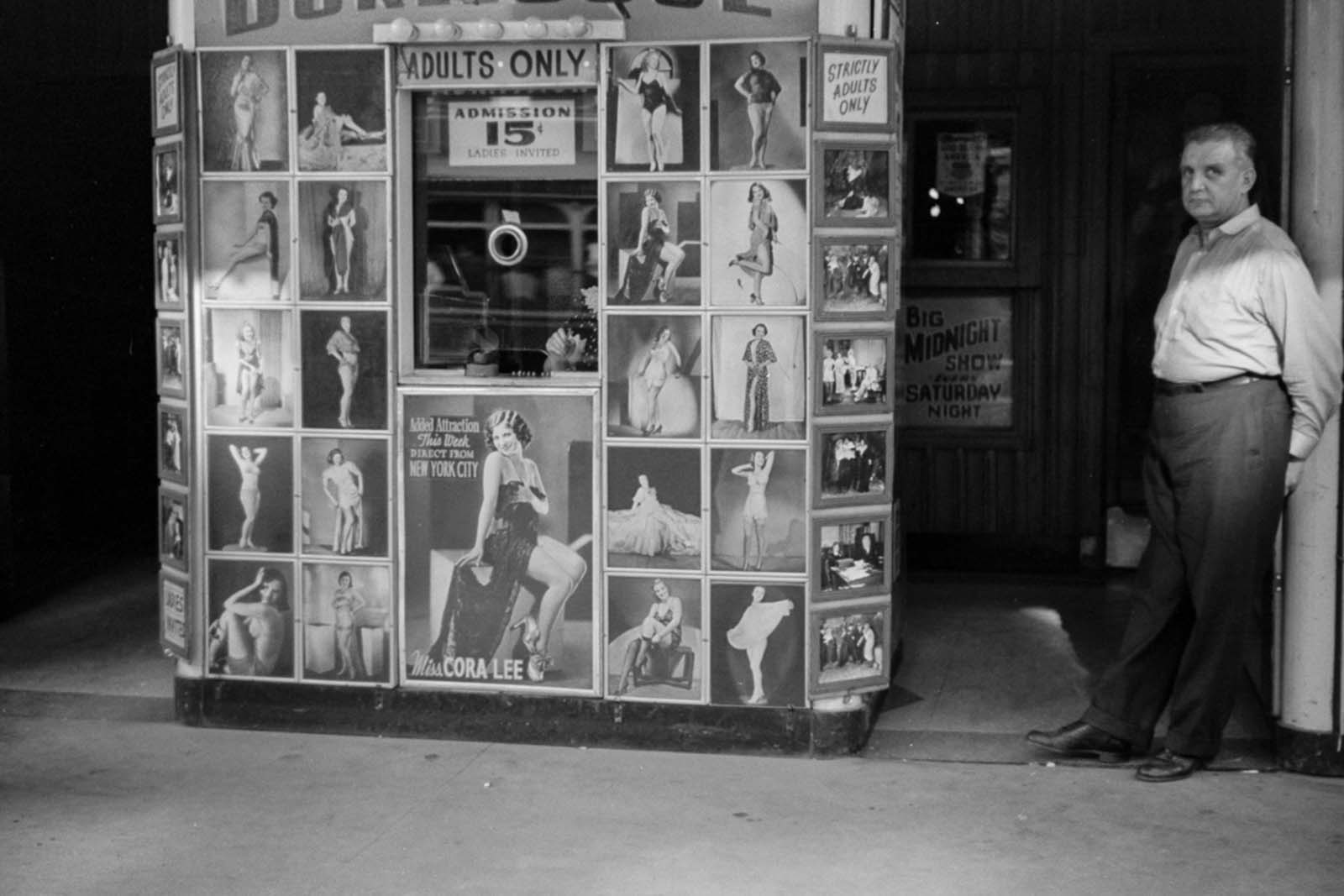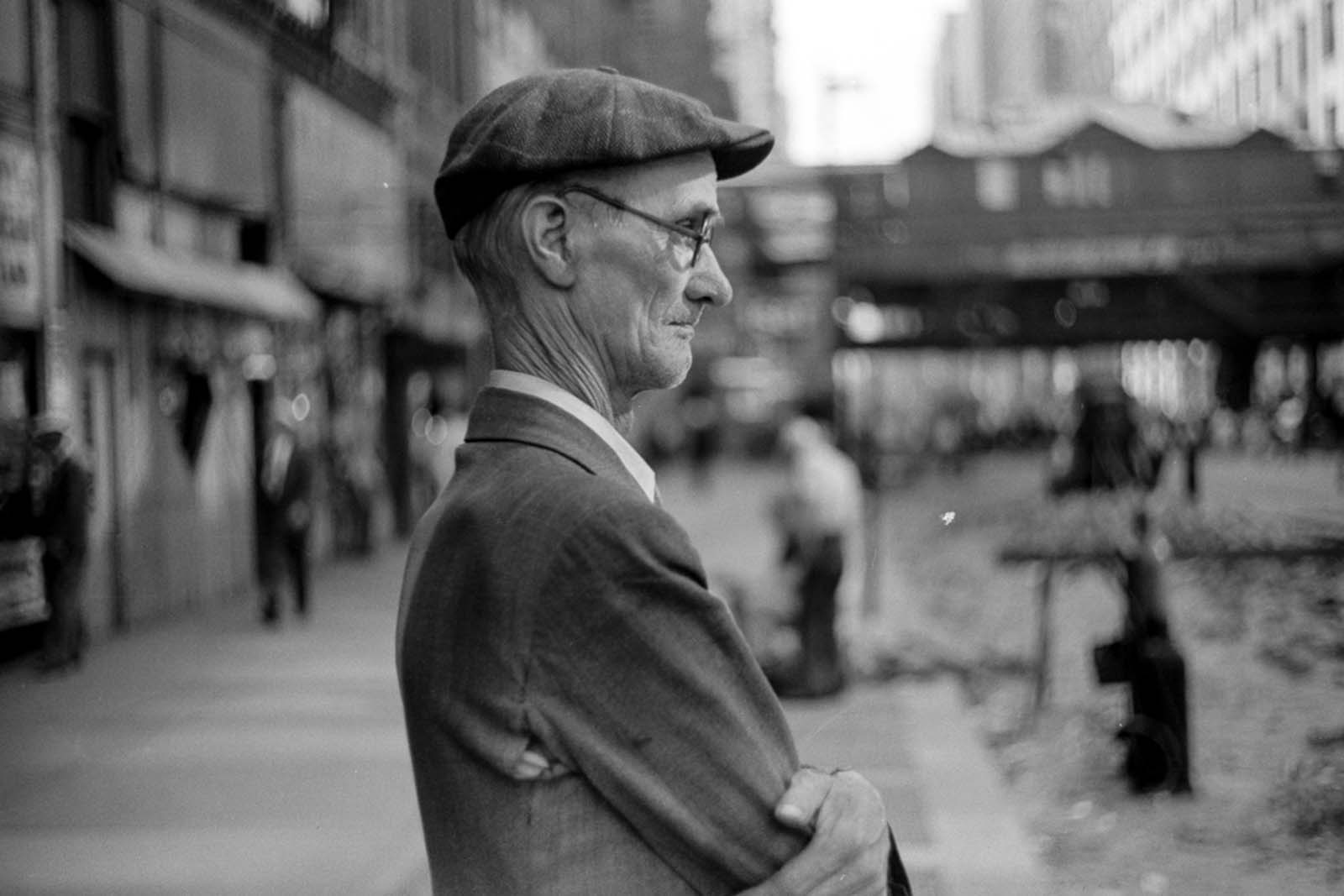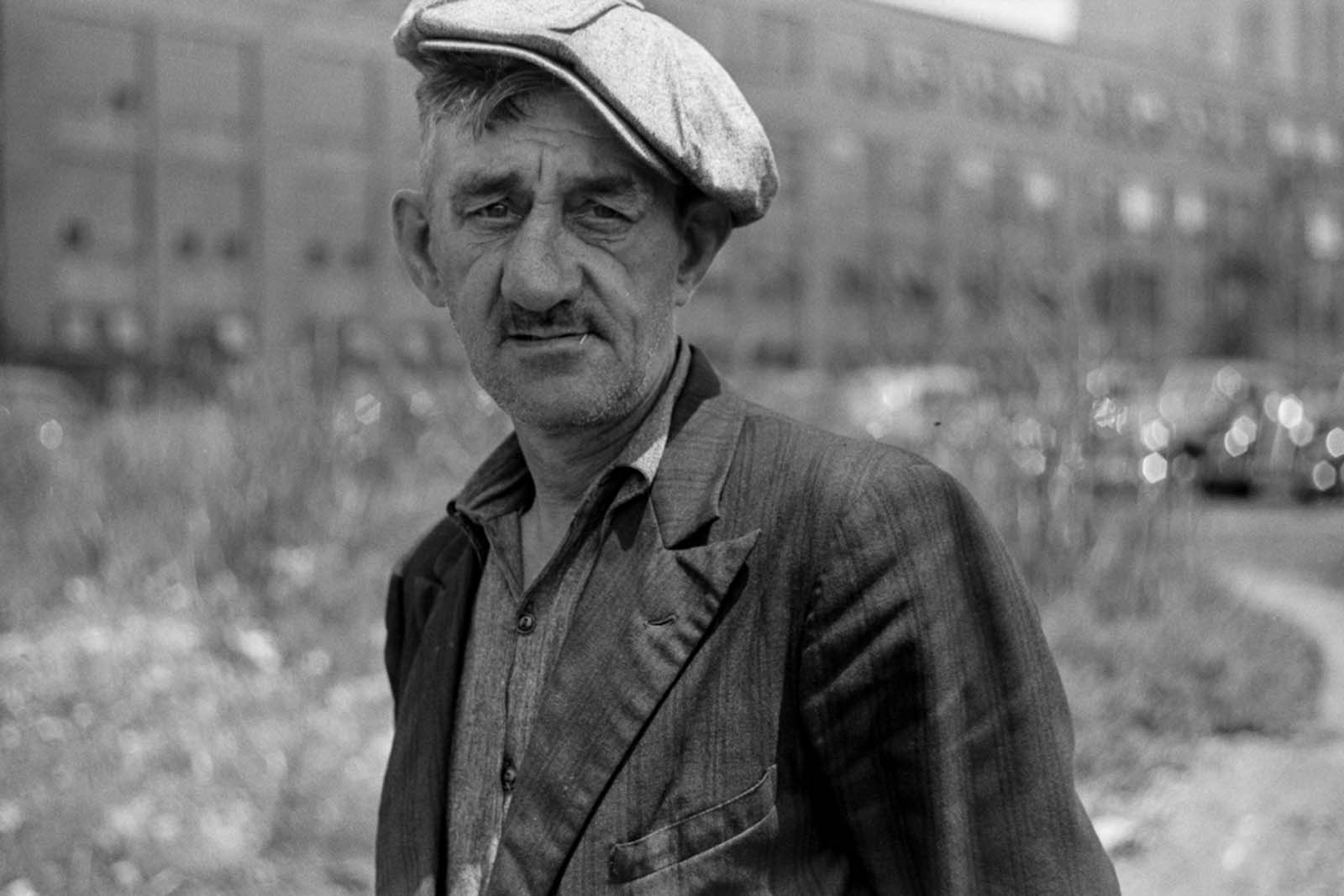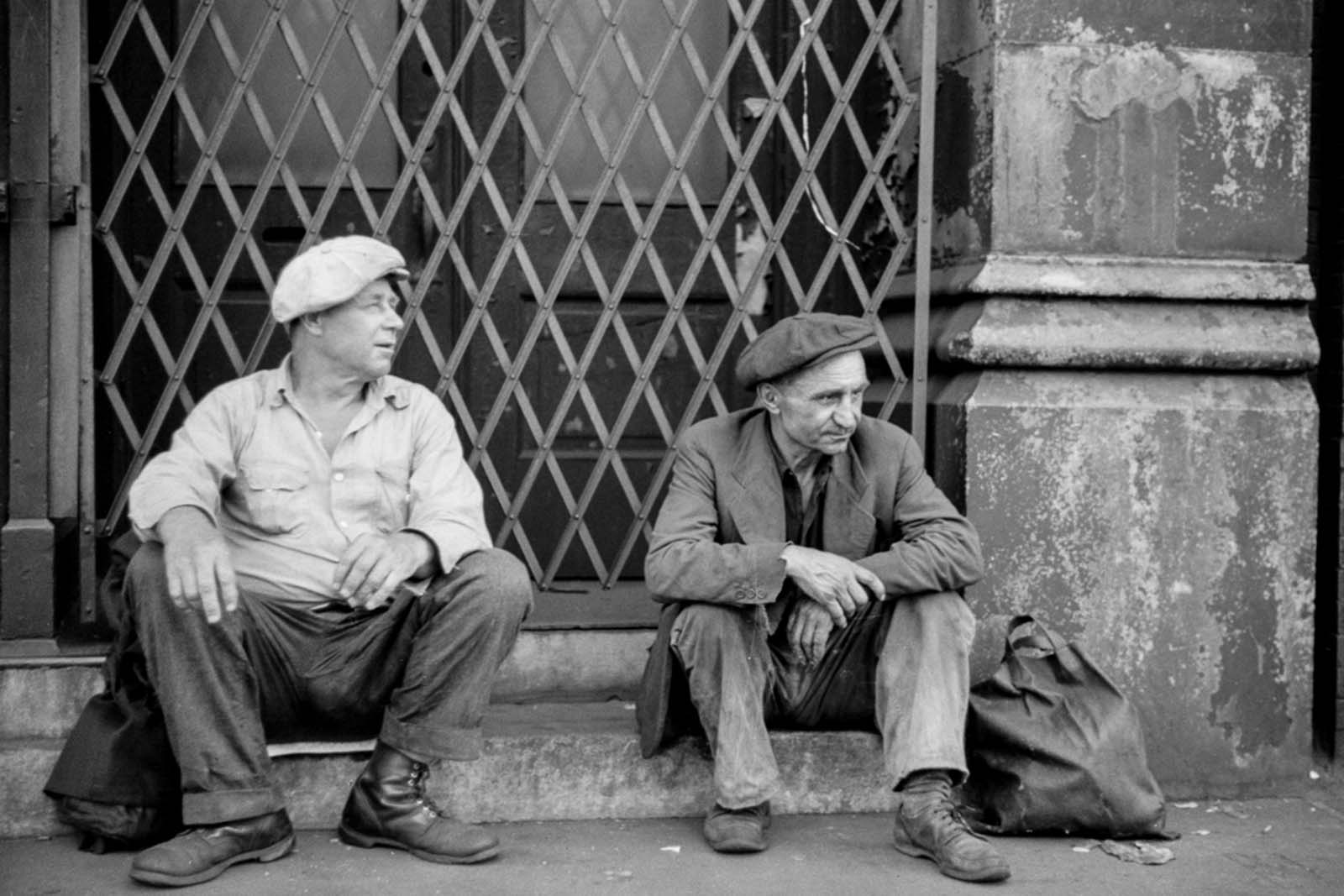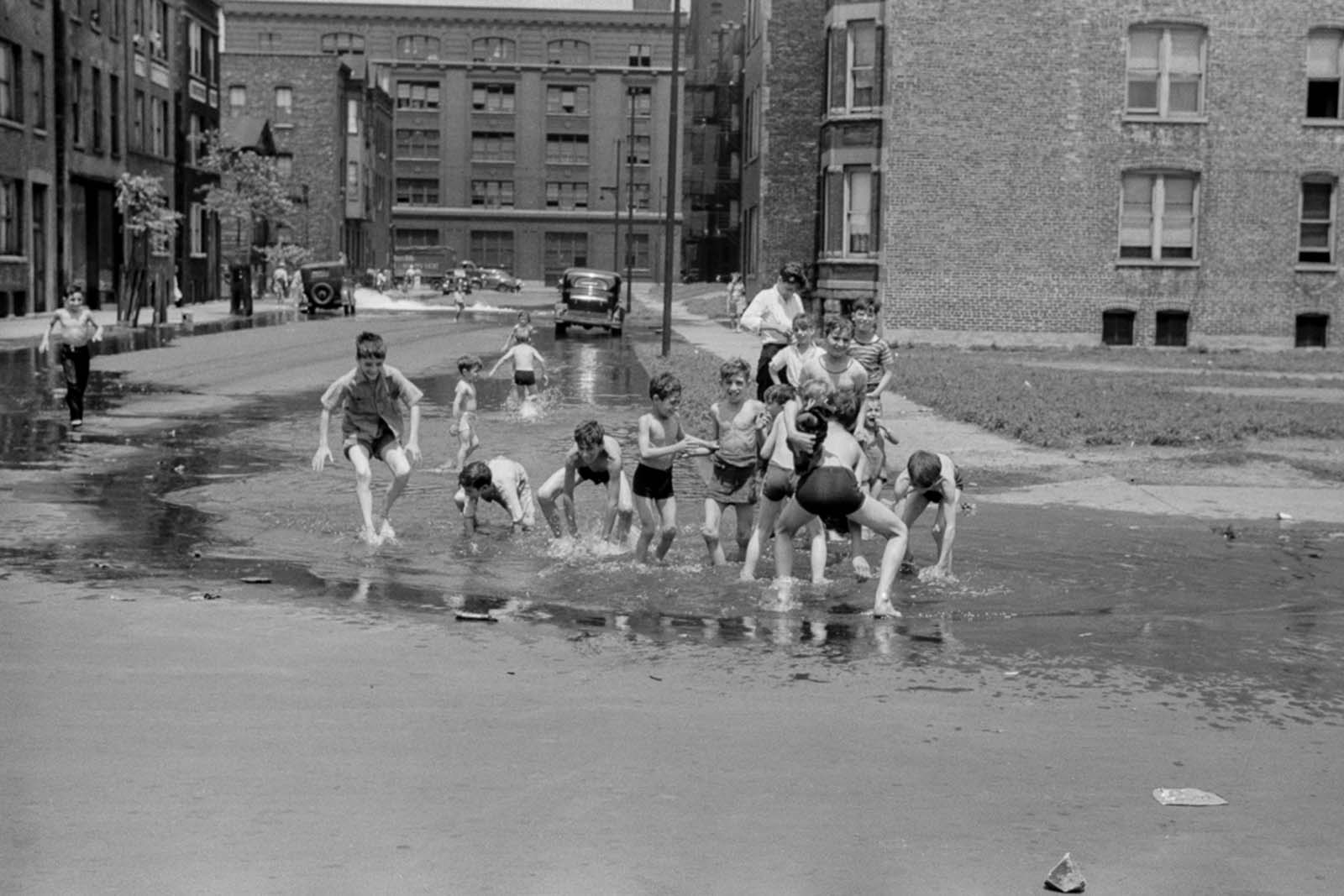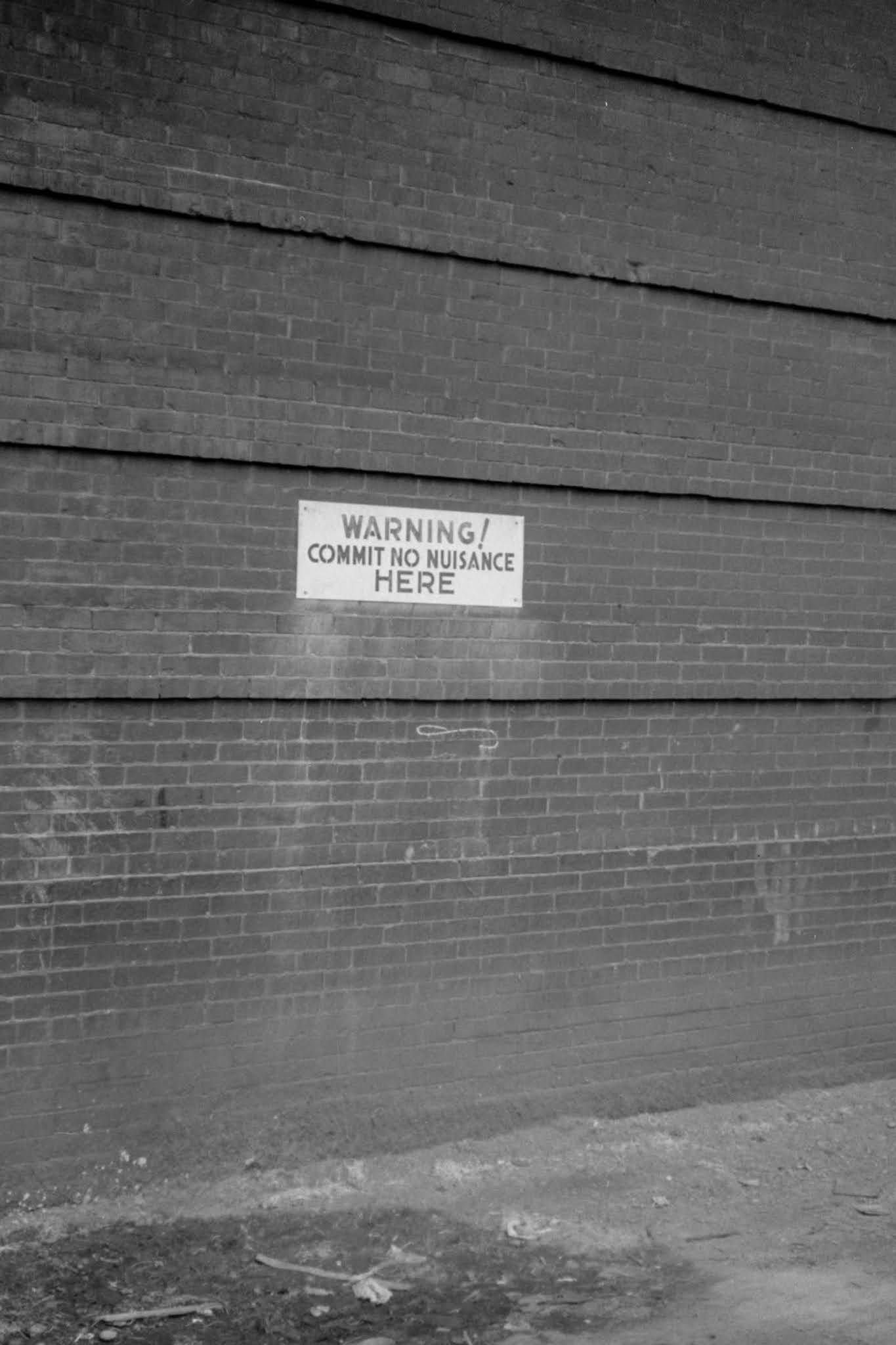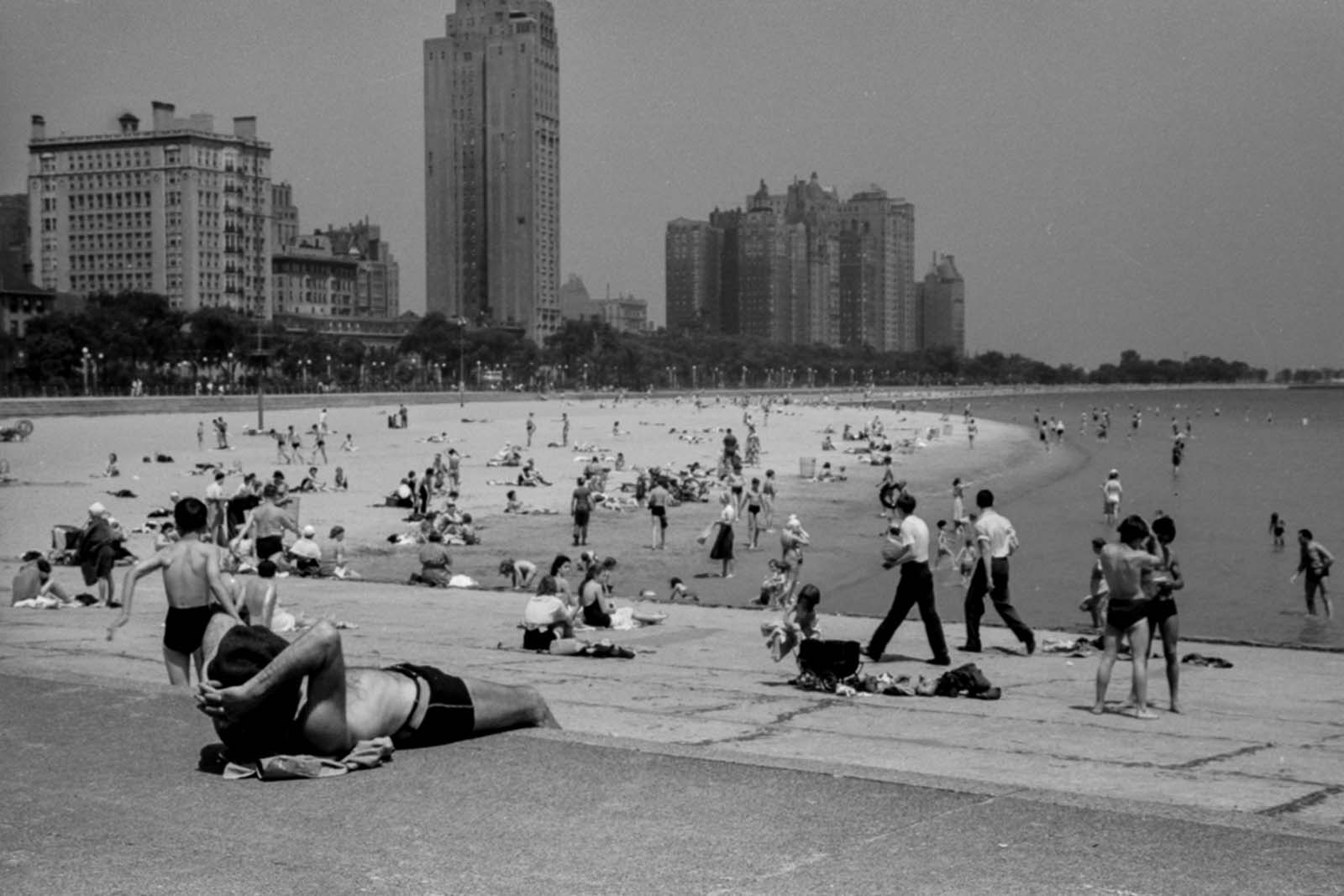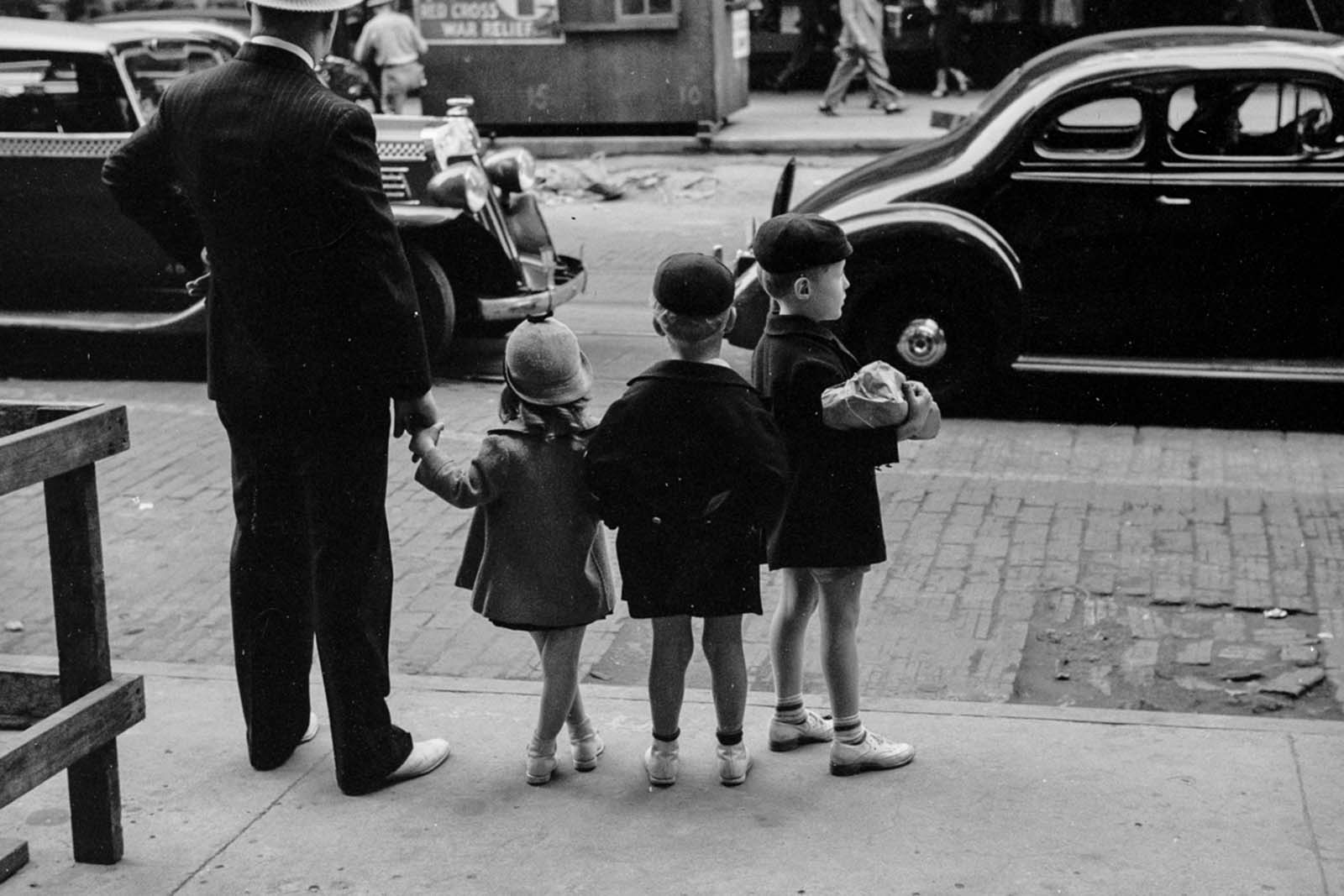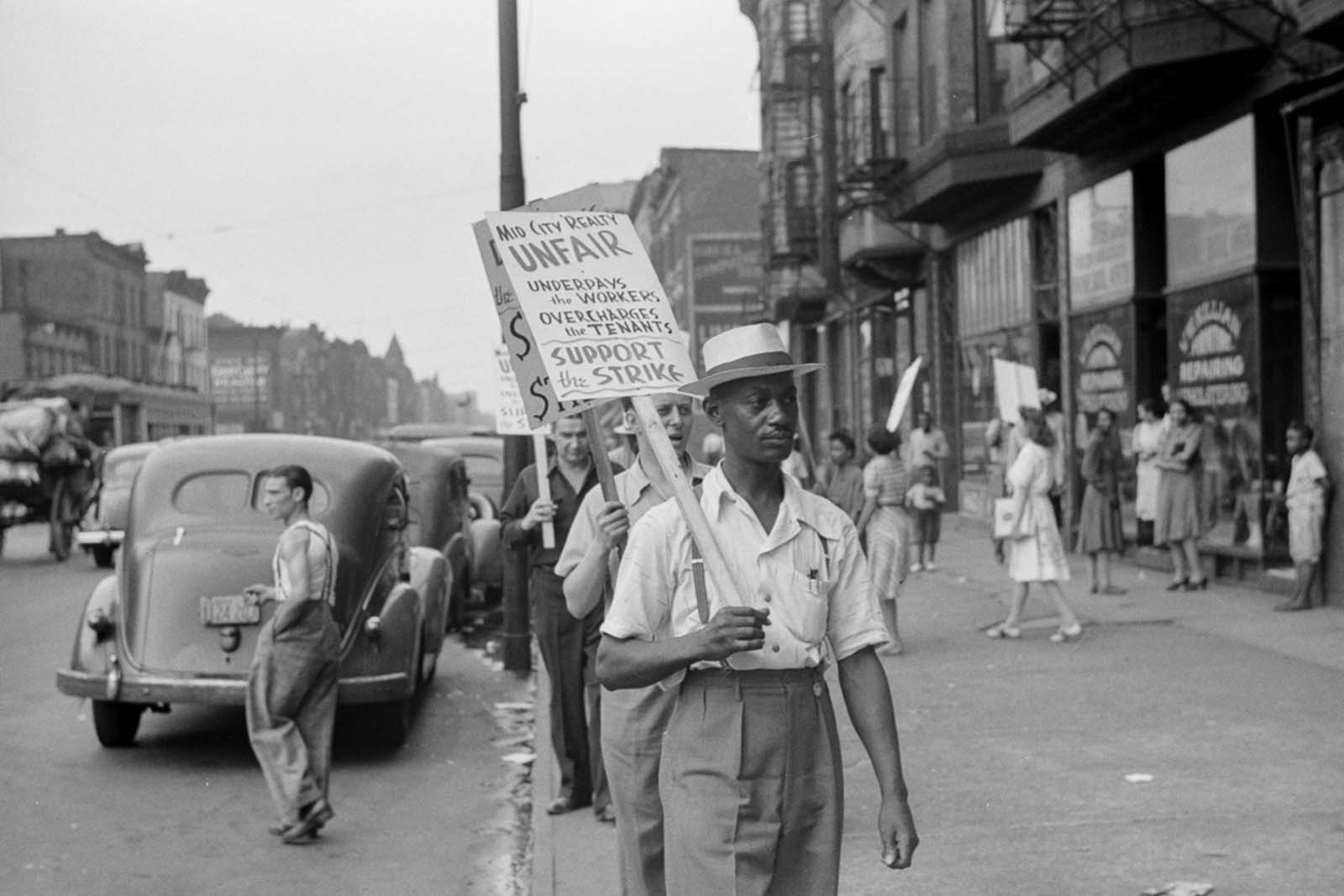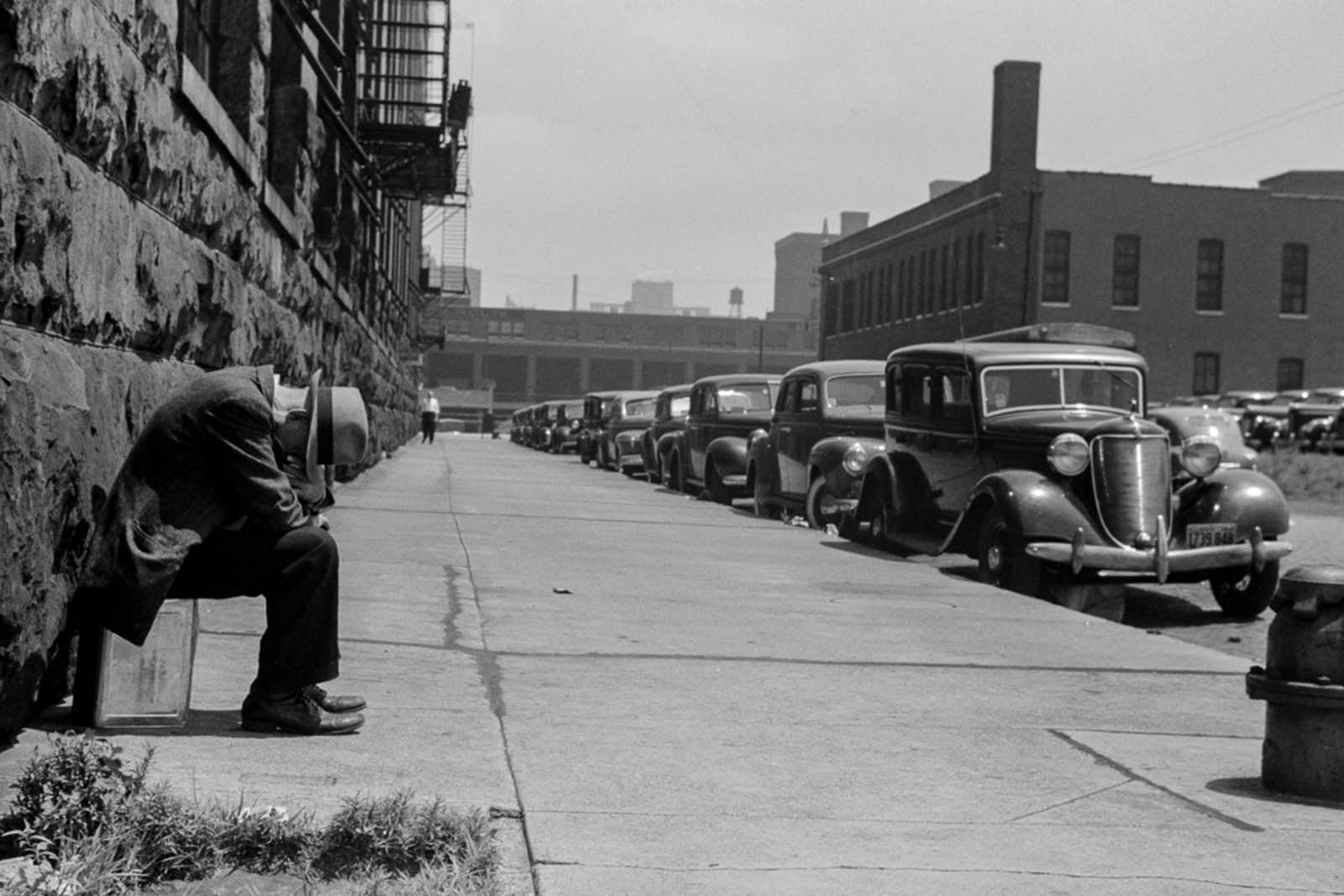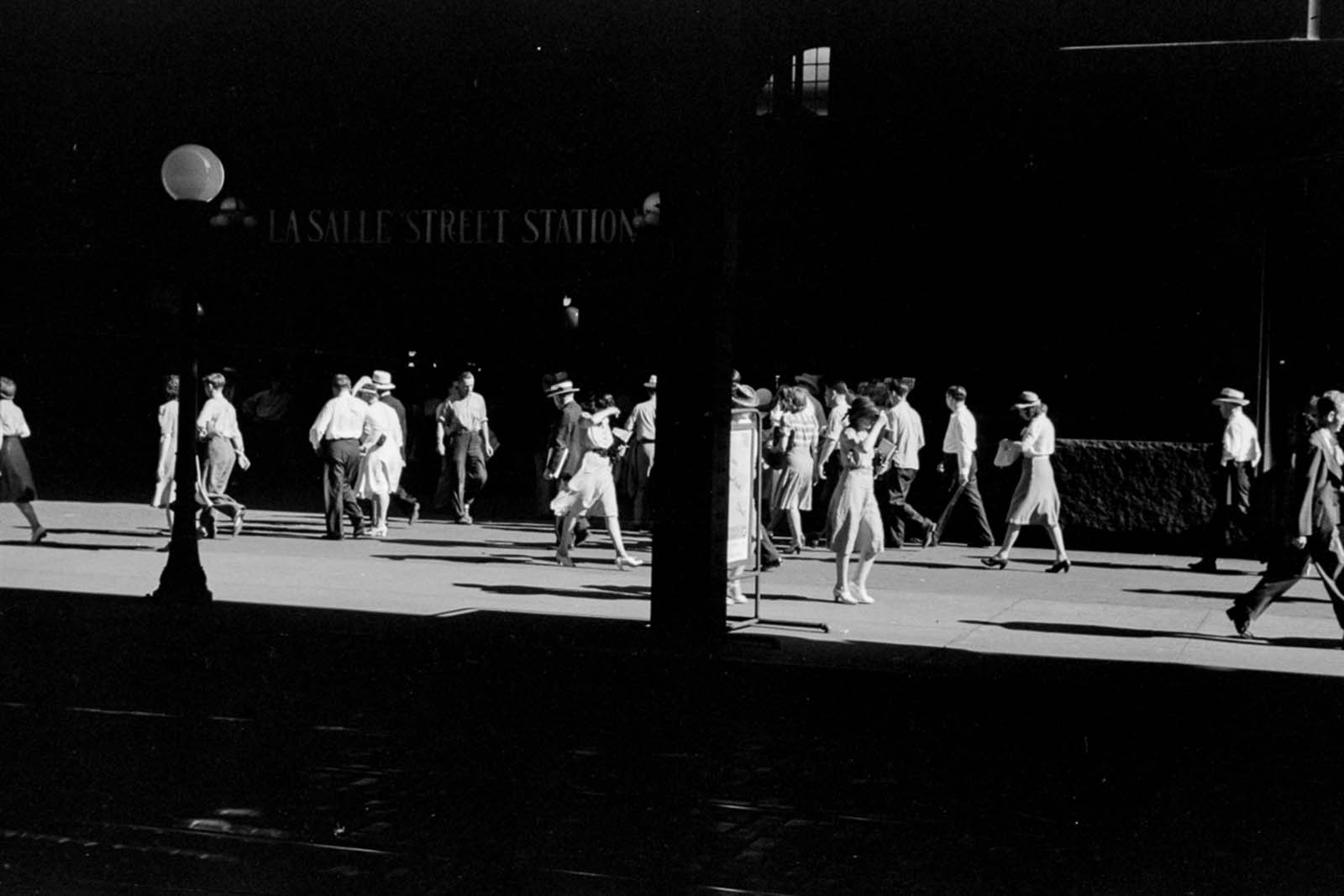John Vachon’s first job at the Farm Security Administration carried the title “assistant messenger.” He was twenty-one, and had come to Washington from his native Minnesota to attend The Catholic University of America. Vachon had no intention of becoming a photographer when he took the position in 1936, but as his responsibilities increased for maintaining the FSA photographic file, his interest in photography grew. Like fellow FSA photographer Edwin Rosskam, Vachon arrived in Chicago in 1941. While Rosskam covered the experience of African Americans in the city’s Southside, Vachon, still a rookie photographer, took a different approach. His pulled back view belies his status as a young photographer gaining experience, but there is a fresh, spontaneous approach to his photography that makes the work uniquely his. Vachon’s Chicago vacillates between the home of well-heeled ladies on shopping trips to depictions of abject poverty, as men sit slumped on sidewalks or stand outside the local bar. From the glossy exterior to the gritty underbelly, the young photographer deftly captures the multi-faceted face of 1941 Chicago.
John Vachon was a photographer for the Office of War Information in Washington, D.C. from 1942 to 1943, and then staff photographer for Standard Oil Company of New Jersey between 1943 and 1944. After serving in the army in 1944–45, in 1947 Vachon joined the Photo League, where he wrote book reviews for Photo Notes and participated in many exhibitions. Between 1945 and 1947 he photographed New Jersey and Venezuela for Standard, and Poland for the United Nations Relief and Rehabilitation Administration. Vachon became a staff photographer for Life magazine, where he worked between 1947 and 1949, and for over twenty five years beginning in 1947 at Look magazine.
(Photo credit: John Vachon / Library of Congress). Notify me of new posts by email.
Δ Subscribe
